


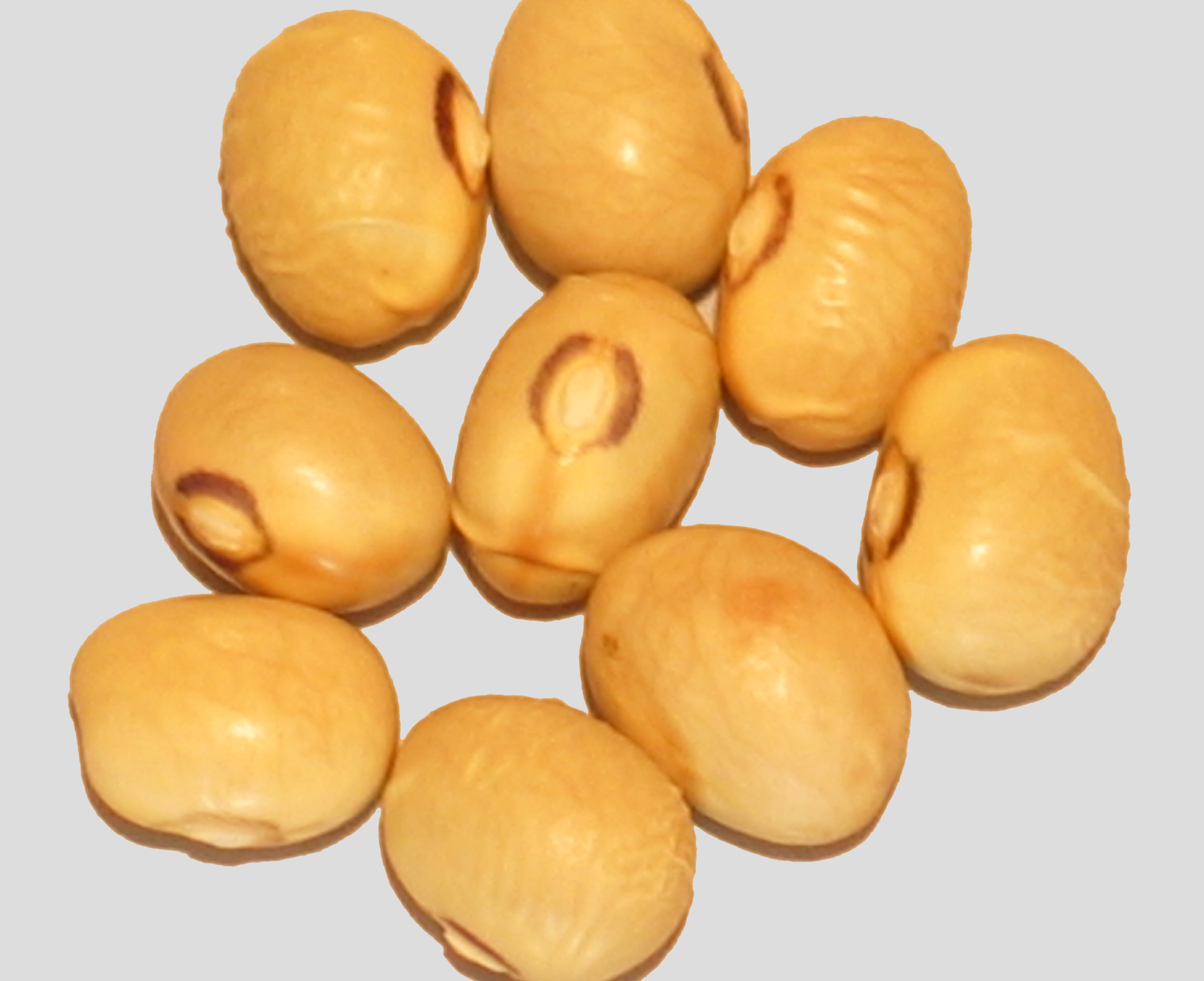
Botosani Cyclops
Grown In '16 & 2019
Pole Dry. Introducing the Botosani Cylops bean, hailing from the picturesque region of Moldavia in Romania. This exceptional bean is believed to be native to this vibrant area, showcasing its rich agricultural heritage. It was brought to light by renowned seed and rare plant collector Joseph Simcox, affectionately known as "The Botanical Explorer," who uncovered this gem during his overseas adventures.
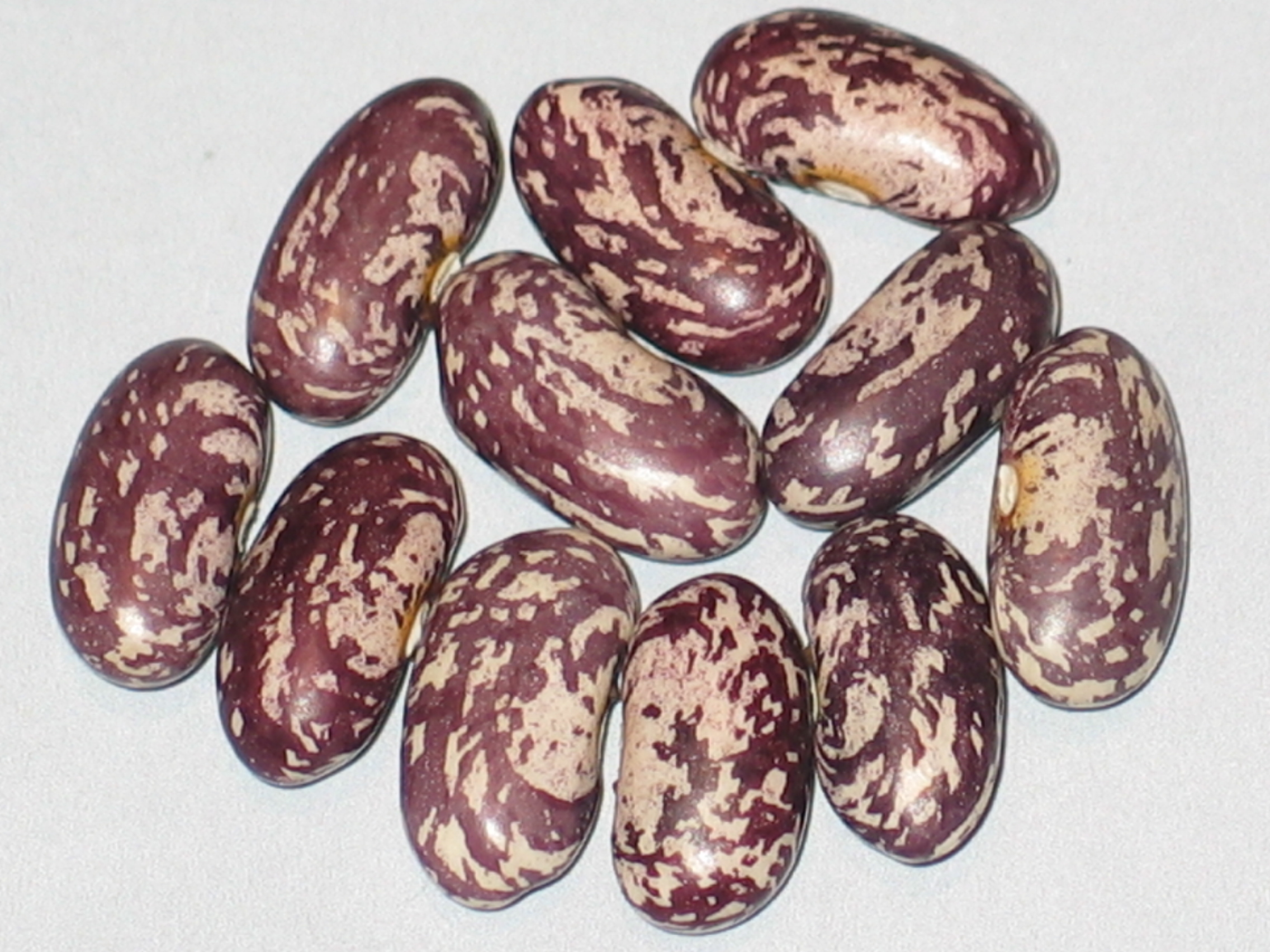
Botosani Splash
Grown In 2023
Bush Dry. The Botosani Splash bean, likely originating from the Moldavia region of Romania, is a unique specimen with a rich cultural heritage. This variety was brought to the forefront by esteemed seed and rare plant collector Joseph Simcox, known as "The Botanical Explorer." My seed donor, based in Marion, Iowa, contributed these seeds in 2017, connecting this fascinating bean to a new home in the heartland of America.

Brazilian Black
Grown In 2018
Pole Dry. My original donor was from South Africa and the seed packet was marked Johnnesburg, South Africa.
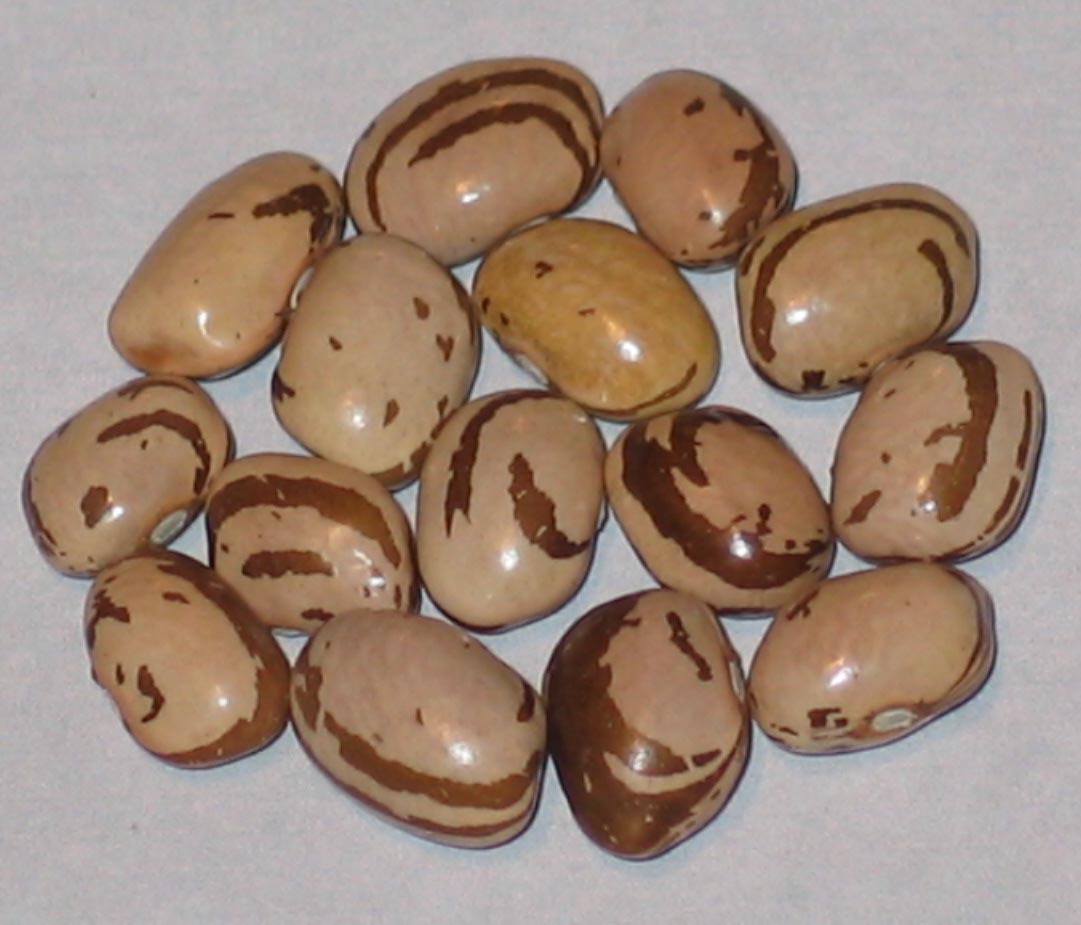
Breck’s Italian
Grown In 2021
Pole Snap. No Known history of this bean. I probably was given this bean at a seed swap I attended sometime in the last 5 years.

Brinker Carrier
Grown In ’20 & 2021
Pole snap/shell/dry. Grown by the Brinker family in West Virginia for four generations. After Abby Brinker’s death the bean was lost in that family until a member of the Carrier family gave it back to a member of the Brinker family in the late 1950’s. The bean derives it’s name in honor of two families who have stewarded the bean for many years. My seed donor is Amanda Winland of Mount Alto, West Virginia 2019

Brockton Horticultural
Grown In '16 & 2024
Pole Dry. Used as a dry bean only. Introduced to the seed trade by Aaron Low Seed Company in 1885. He secured seed from a vendor in Brockton, Massachusetts.
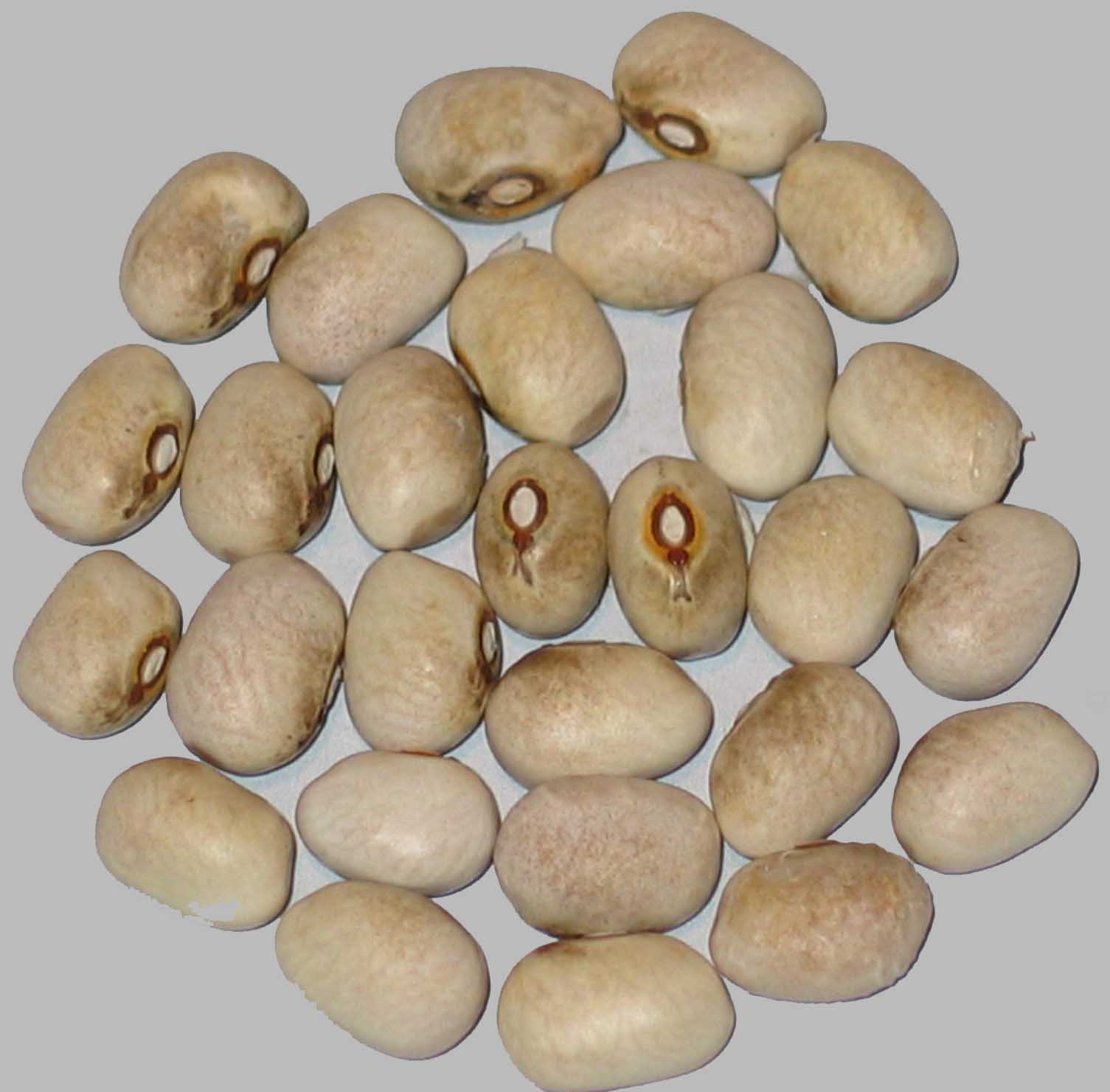
Brooten
Grown In ’12,’17 & 2020
Bush Dry. This is another part of the Robert Lobitz Legacy material that I obtained from Ron Thuma of Hartford, Kansas in 2015. This bean segregated from a packet of solid round, black, brown, and white beans. The bean seems to me to be stable. Named by me, Russell Crow in 2017 for the little Minnesota town of Brooten.
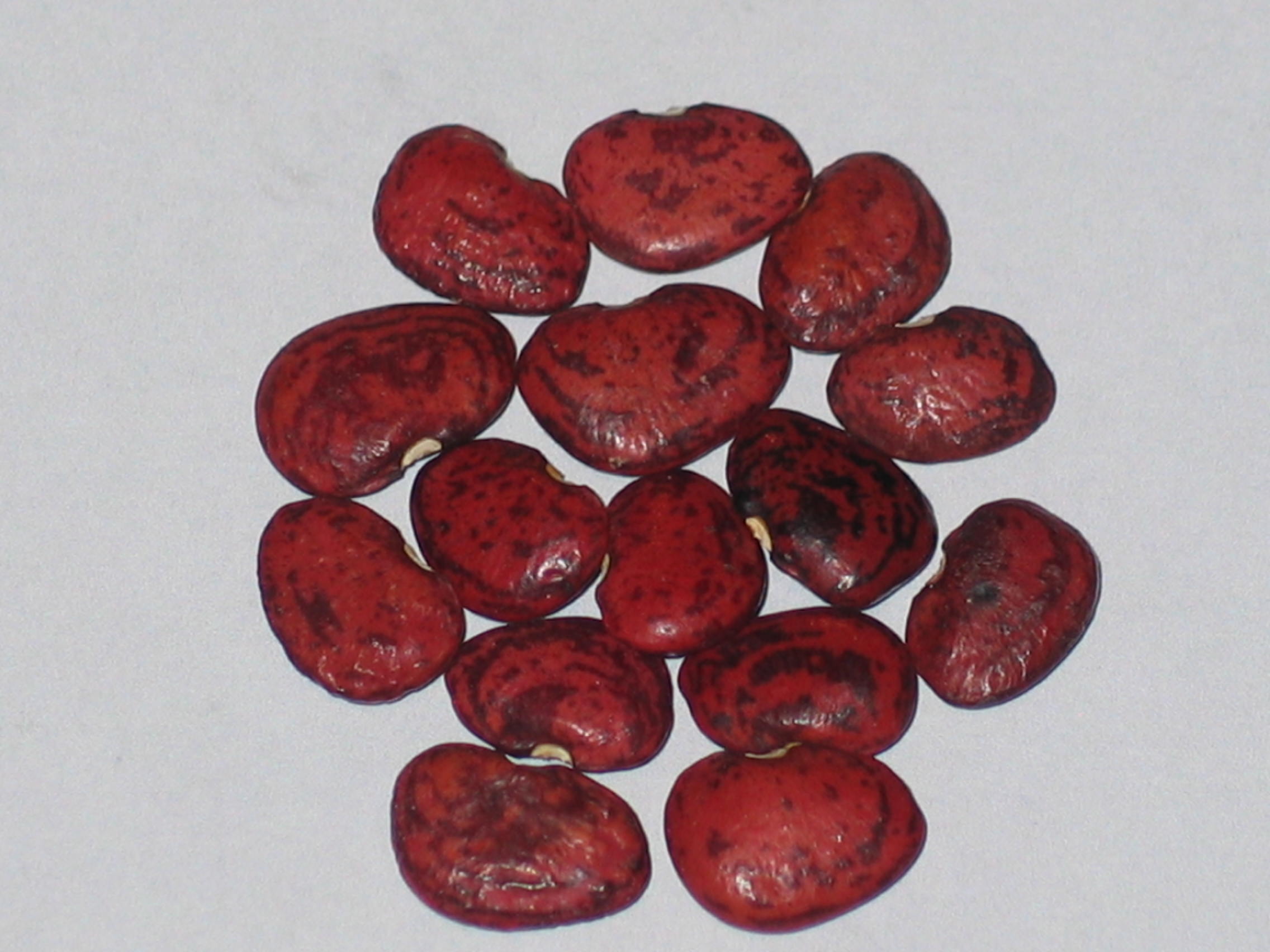
Brown Lima
Grown In ’19 & 2020
Pole Lima. From the seed collections of the Seed Savers Exchange, 2017.
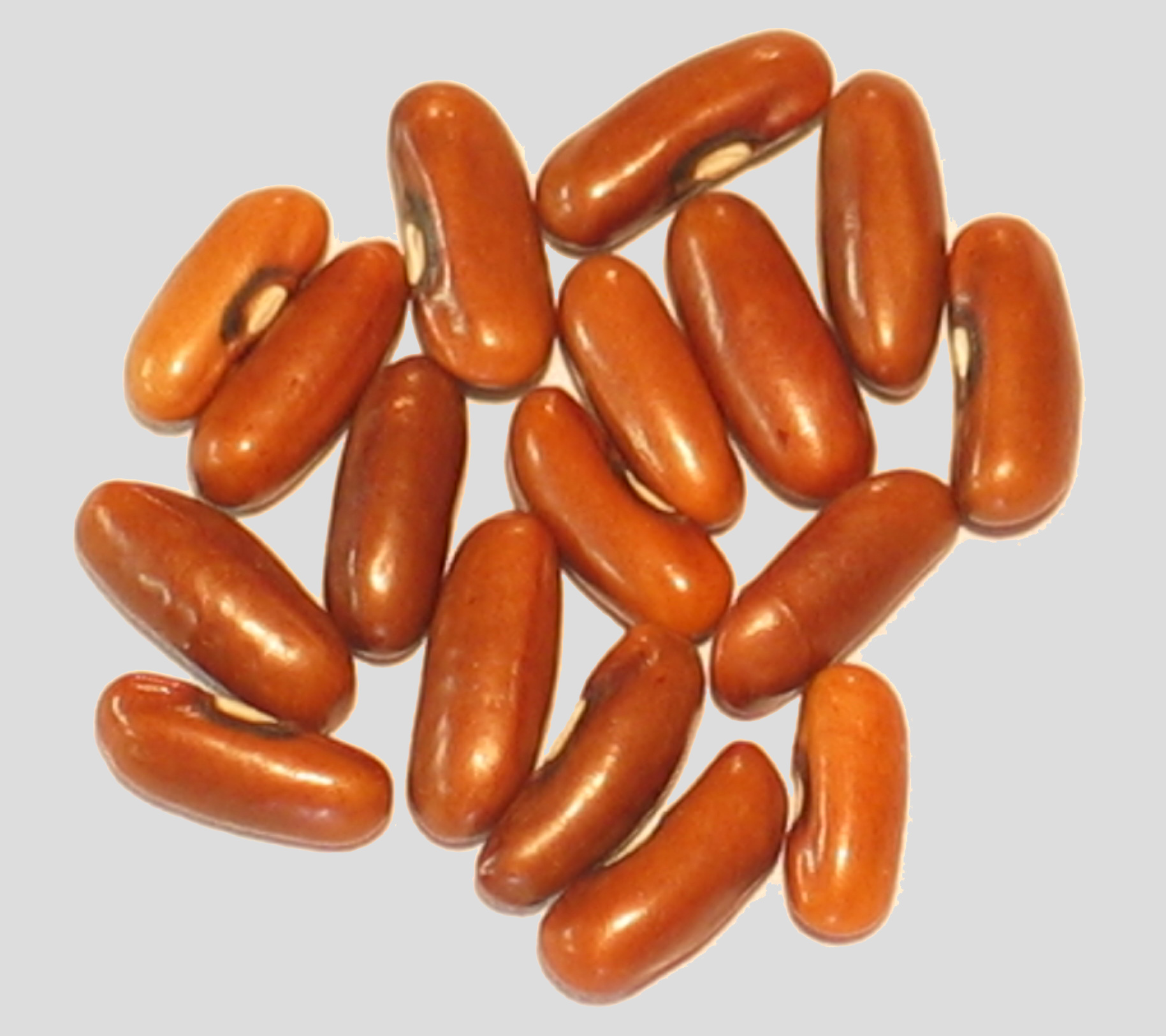
Brown Rice
Grown In ’15,’16,’20 & 2022
Bush Snap. Tiny and slender seeded snap bean. Another of the many beans collected on overseas trips by Joseph Simcox "The Botanical Explorer".
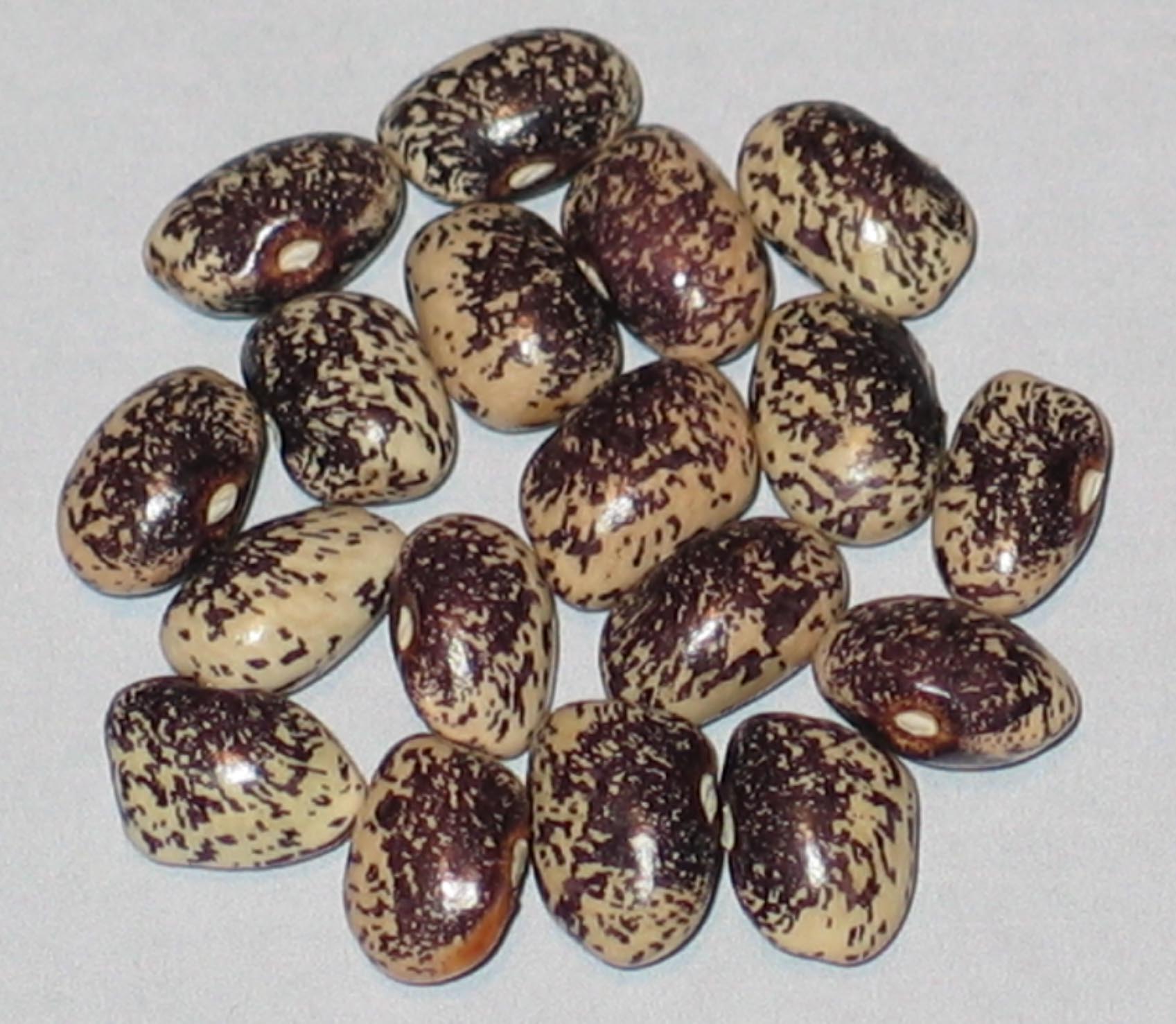
Buxton Buckshot Outcross
Grown In 2023
Pole Dry. Discovered by one of my Network growers from Bosque, New Mexico. Seeds were found in a grow out of Buxton Buckshot in 2018.
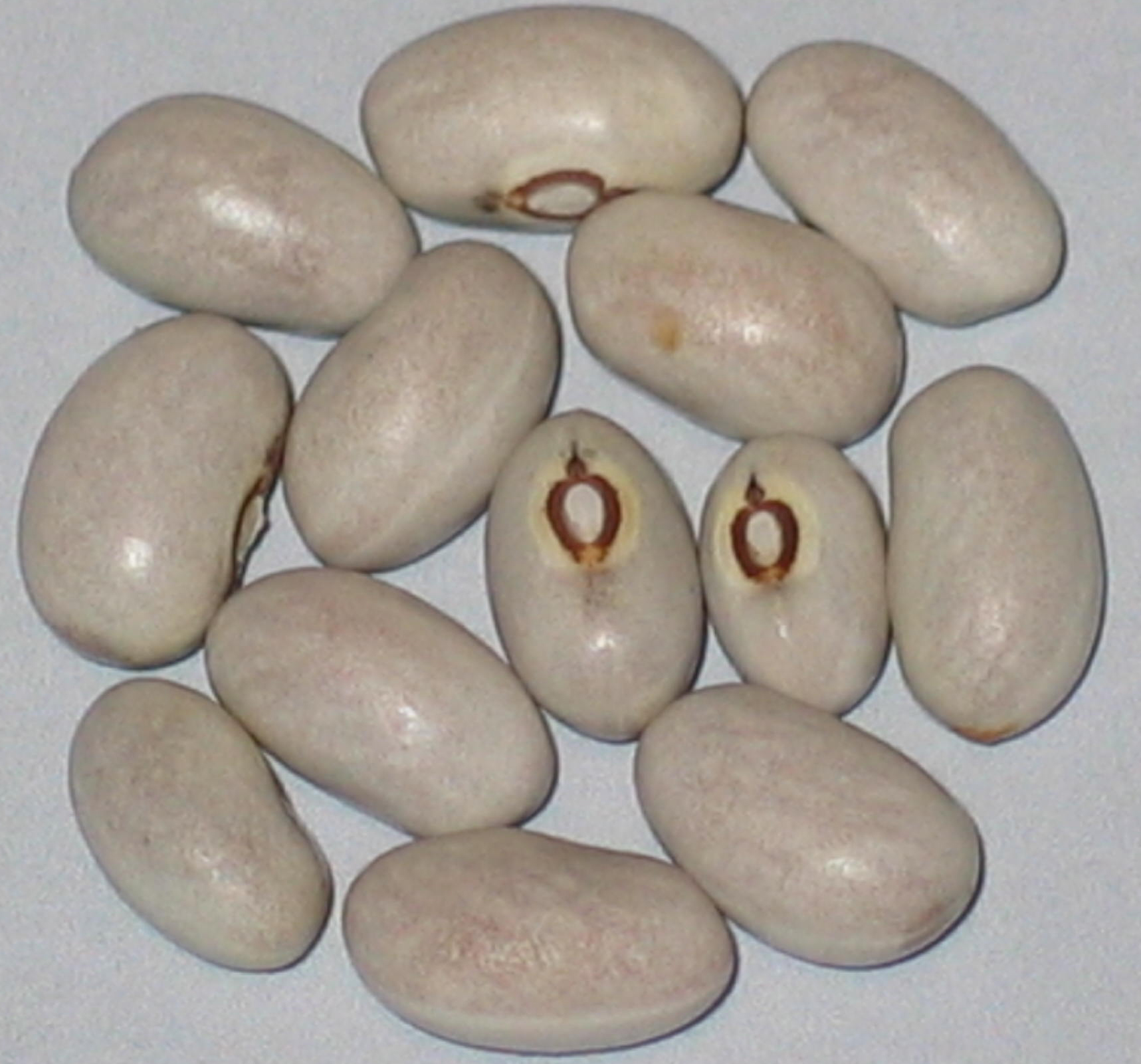
Buddha's Bellybutton
Grown In '16 & 2023
Bush Dry Snap?. Another of the many beans brought back from overseas by Joseph Simcox who was my original donor for this bean and others he gifted me in late 2013.

Burgundy Bolitas
Grown In 2017
Pole Dry. Potter Valley, California seed donor states the real name of this bean is not known to him. Some plants grow with reddish pods which don't seem to breed true.

Burgundy Kidney
Grown In 2018
Bush Dry. Another of the nearly 100 bean varieties donated to me by a Potter Valley, California grower in 2013. States this bean is a good and productive type.
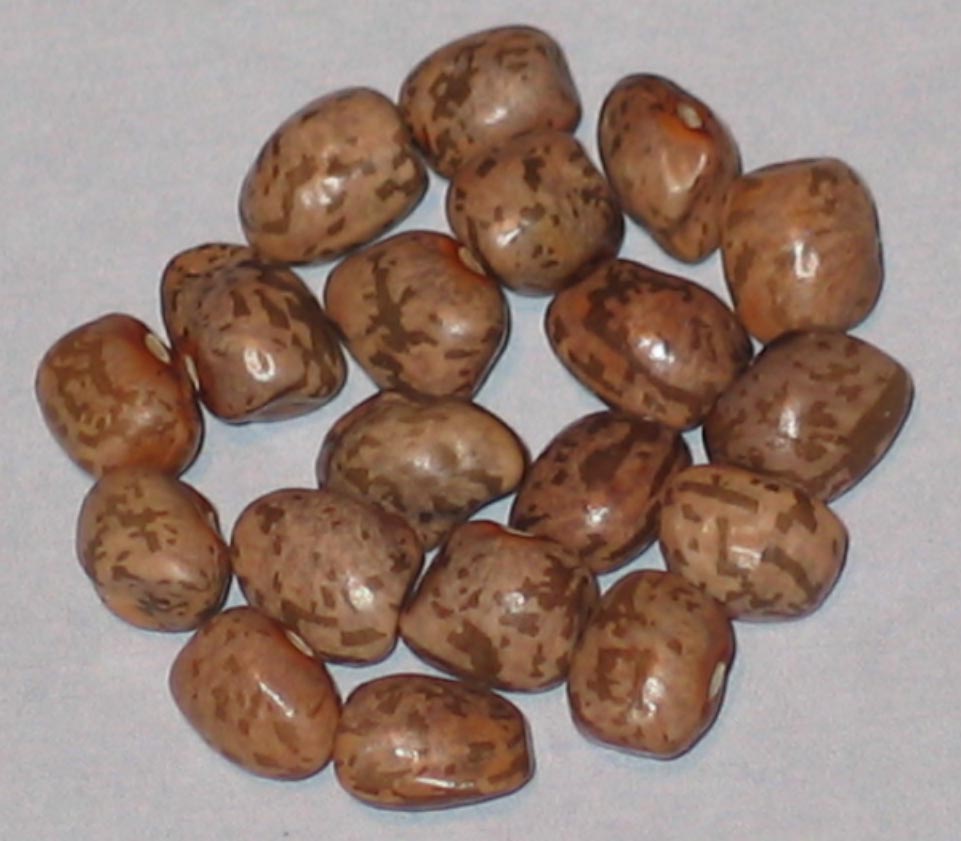
Cades Cove
Grown In ?
Pole Greasy type. The bean has been grown in the Smokey Mountains near Cades Cove Tennessee since the 1800’s. My seed donor is Brynn Paillet of Lebanon, Tennessee 2018.

Calico
All Seed Is Out To Grower
Pole Lima . I’ve seen listings for a bush lima that bares this name but knowing how the donor of this seed loves pole limas, Curt Burroughs of Memphis, Missouri in 2019.

Cannellini
Grown In '20 & 2024
Bush Dry. Another bean from my Potter Valley, California donor. It is the Italian equivalent of a white kidney bean.
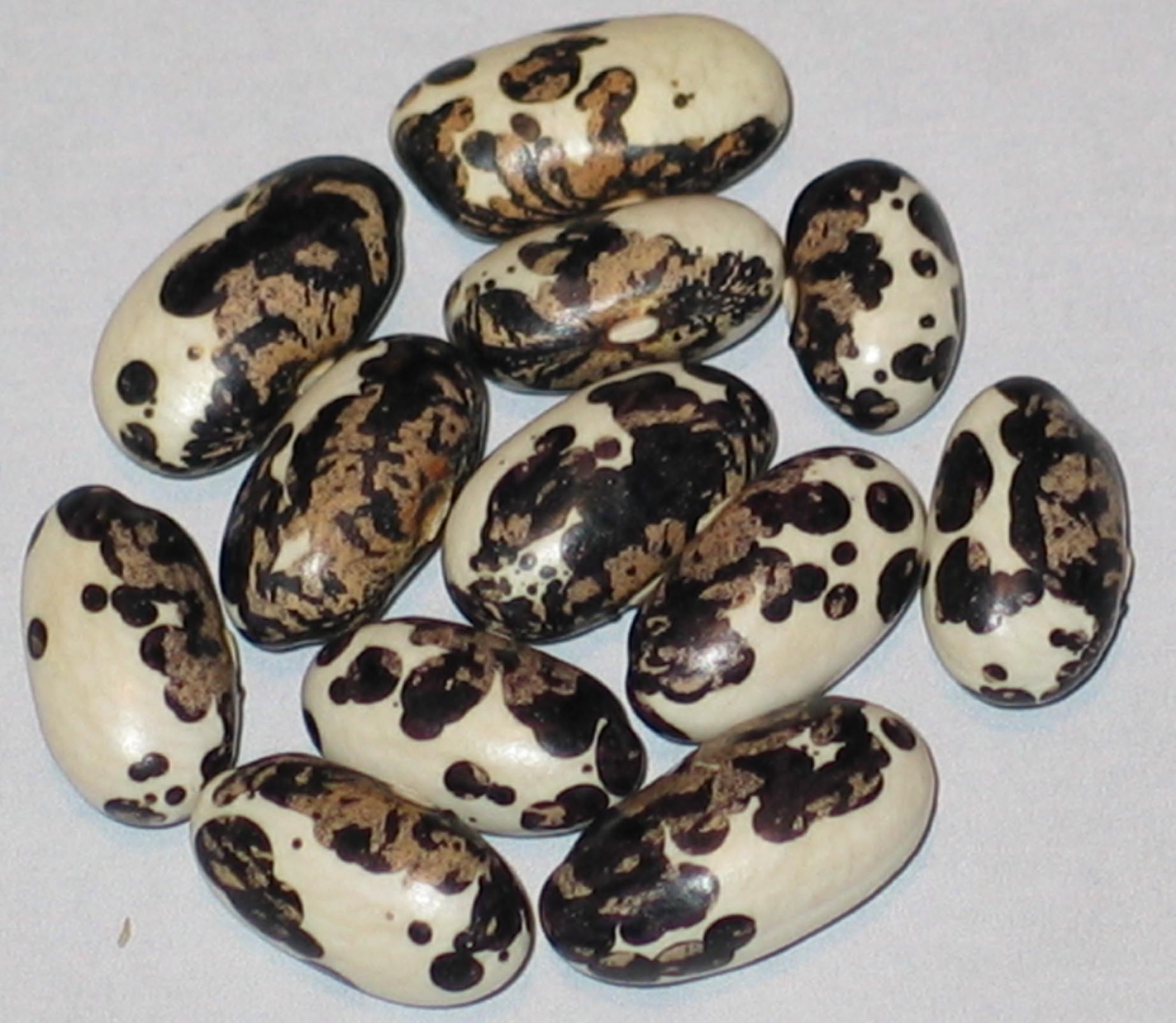
Cannellino Malato
Grown ’21 & 2023
Bush Dry. This bean was originally acquired in the spring of 2019 from a grower in Valpiano, Italy.
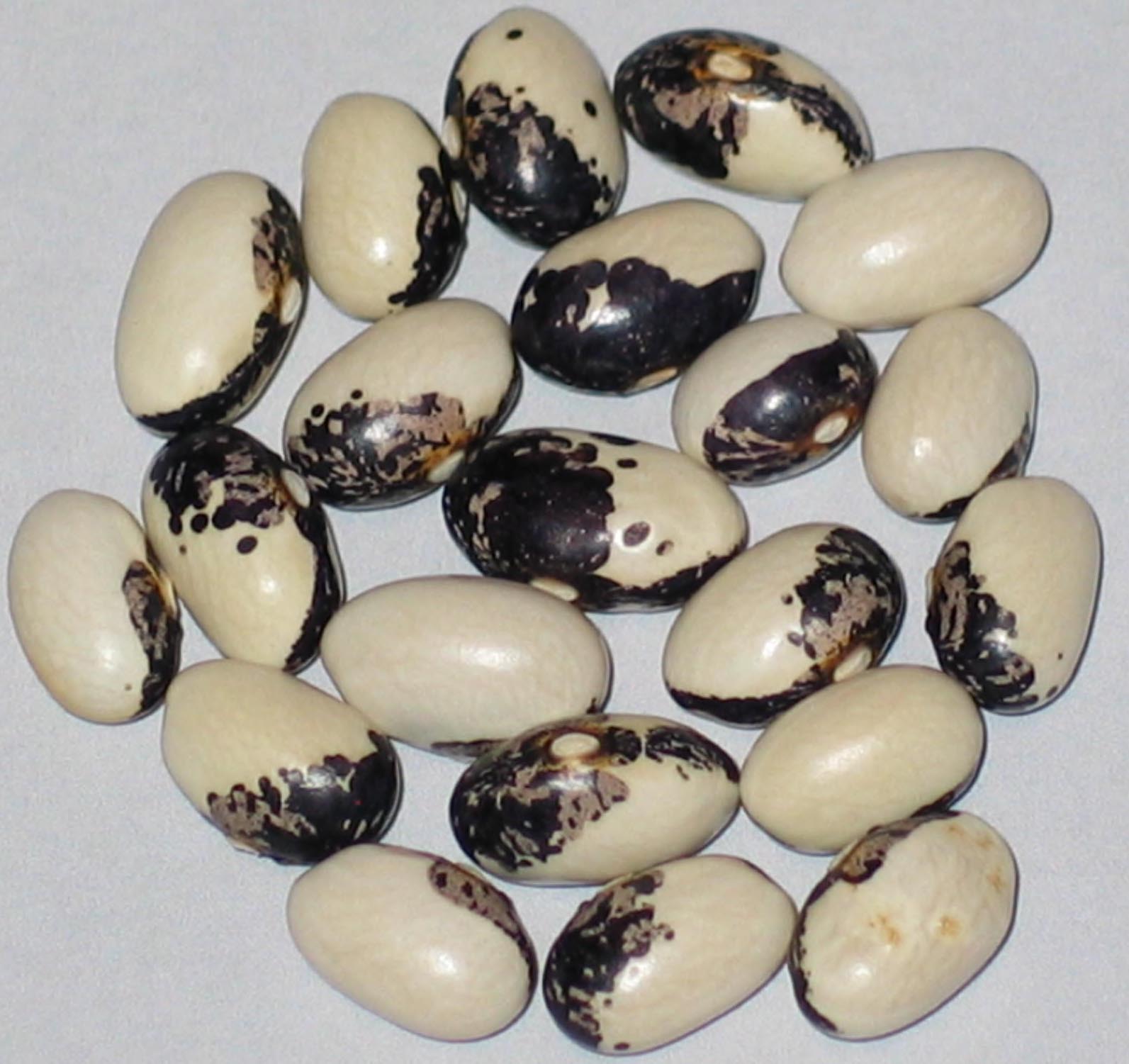
Cannellino Malato Segregation 3
Grown In '19 & 2022
Bush Dry. After a grow out of Cannellino Malato in the summer of 2019 by one of my Network growers in Sommerville, Maine. Five segregations of the mother bean were found.

Cape Sugar
Grown In '14,'18’19,20 & 2023
Semi Runner Dry. From my South Africa donor. Capetown South Africa is the stated origin of the bean. Sugar beans in South Africa tend to be partly white with a horticultural patch of various sizes depending on the variety. Often used to make a dish called sous boontjies or sauce beans.

Cape Sugar 2
Grown In '14,’18,’20 & 2021
Pole Dry. A taller growing version of the semi runner type. Same origin and useage.
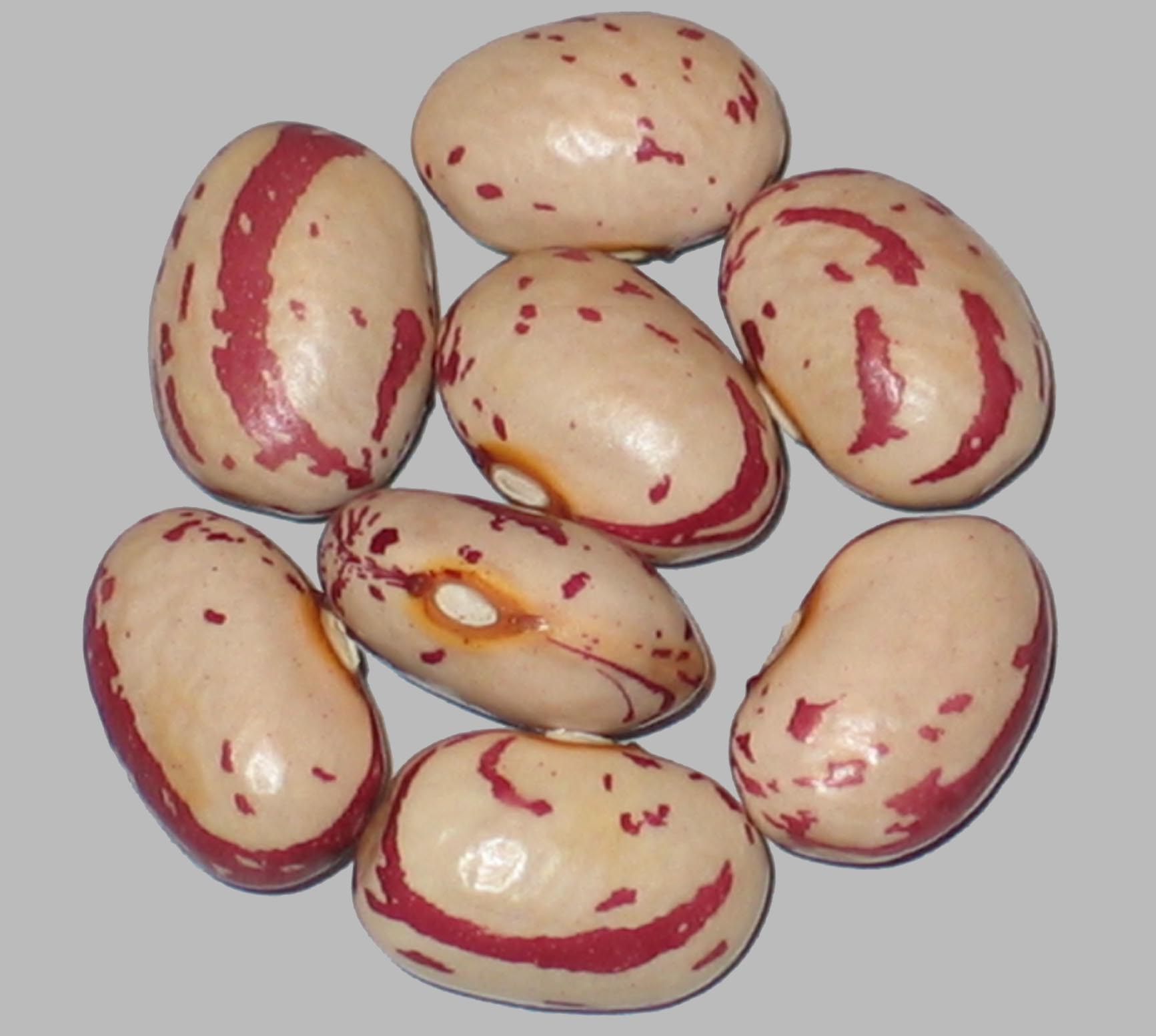
Capirame
Grown In '16 & 2019
Bush Dry. Could be the name is just the shortened version of Tarahumara Capirame. Tarahumara Indians have grown a similar bean in the state of Chihuahua, Mexico. Said to have a smooth texture when cooked. The seed of this one seems more rounded and shorter than the kidney shaped Tarahumara Capirame beans that I had collected from a Colorado grower.

Cappuccino Nano
Grown In ’22 & 2023
Bush Dry. This bean was acquired in the spring of 2019 from a grower in Valpiano, Italy.
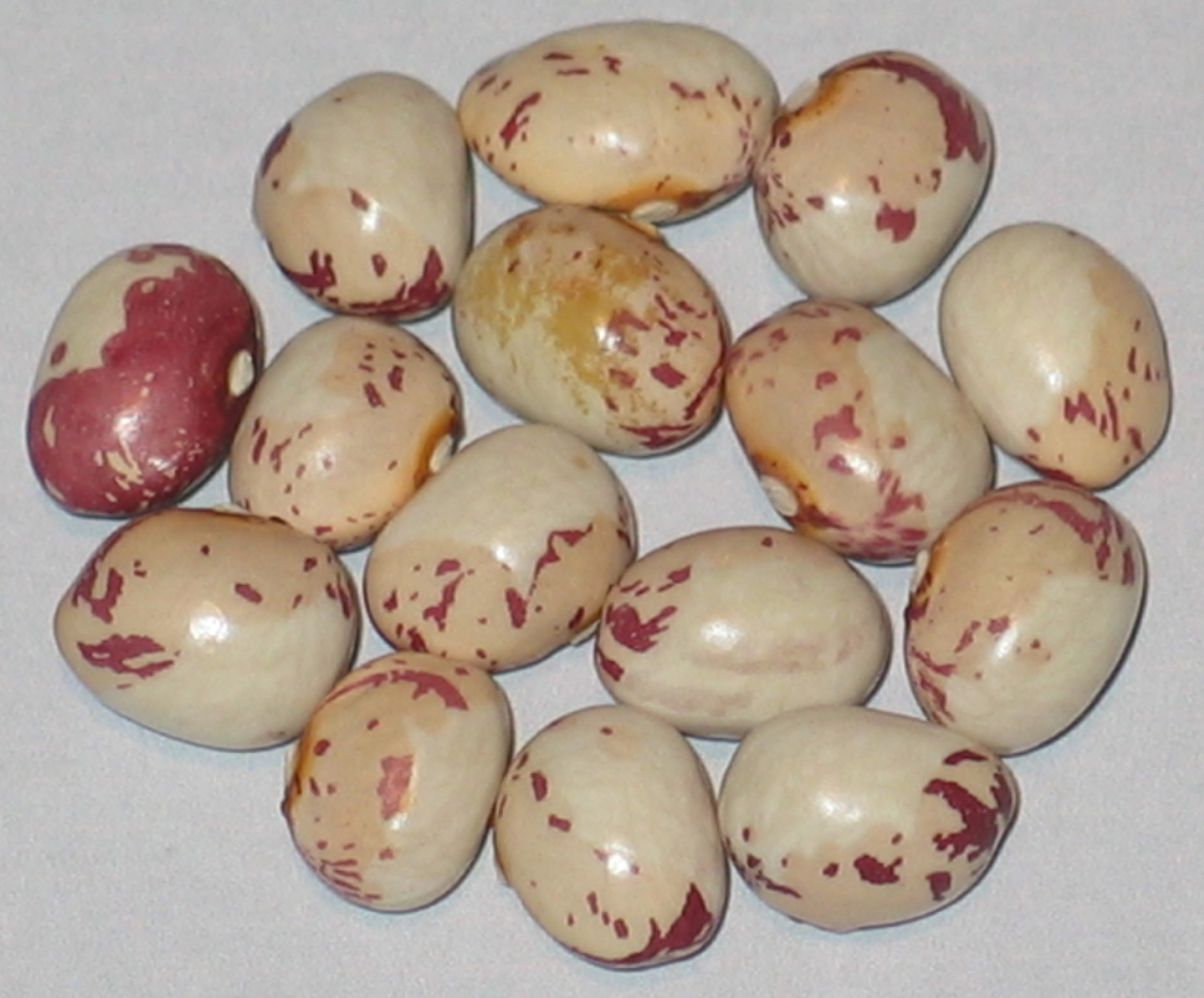
Cara La Virgen De La Banera Leon
Grown In ’18 & 2021
Pole Dry. The beans name interprets into English from Spanish as “Face Of Our Lady Of La Bensza in Leon. Likely the beans origin is Leon, Spain. My seed donor is from Labenz, Germany, 2017.

Carolina Red Stick
Grown In 2023
Pole. The bean comes to me through the Remy Orlowski (deceased) Sample Seed Shop collection. It is a family heirloom of Steve Todd of Knoxville Tennessee. Can be eaten fresh, shell, or dry. Brought to Tennessee in the early 1800’s.
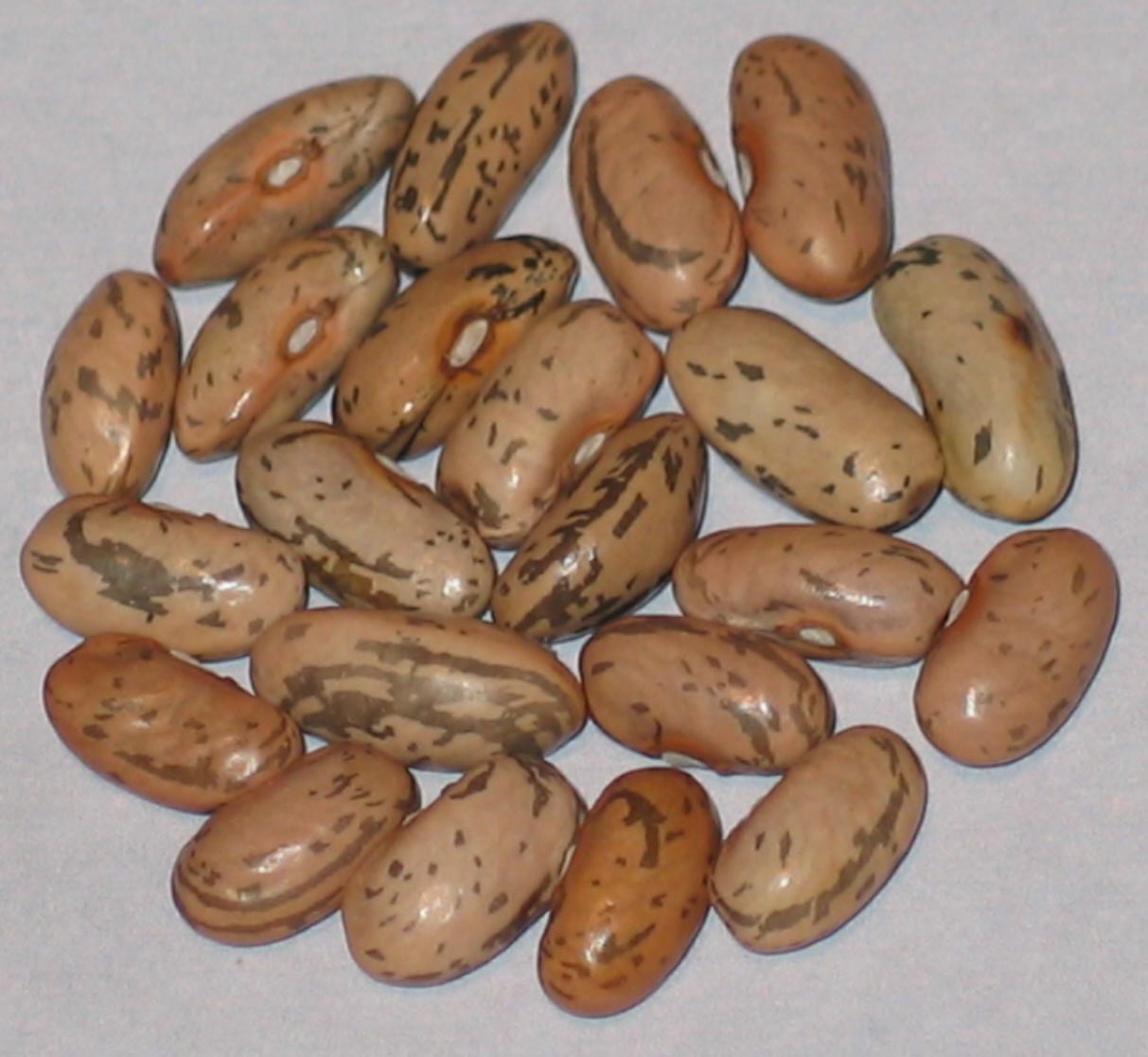
Cascade Giant
Grown In '22 & 2024
Pole Snap. Green stringless pods streaked with purple. Pickable pods in about 70 days. The bean was bred at the Oregon State University by James R. Baggett (1928-2016) and released by OSU in 1992.

Cerna Tanecnice
Grown In ’20,'21 & 2024
Pole Dry. My seed donor is from the Czech Republic, 2019. The beans name means Black Dancer. The pattern and coloration of the bean reminds me a lot of a bean passed around Seed Savers Exhange membership in the 1980’s called Hobb’s Goose.
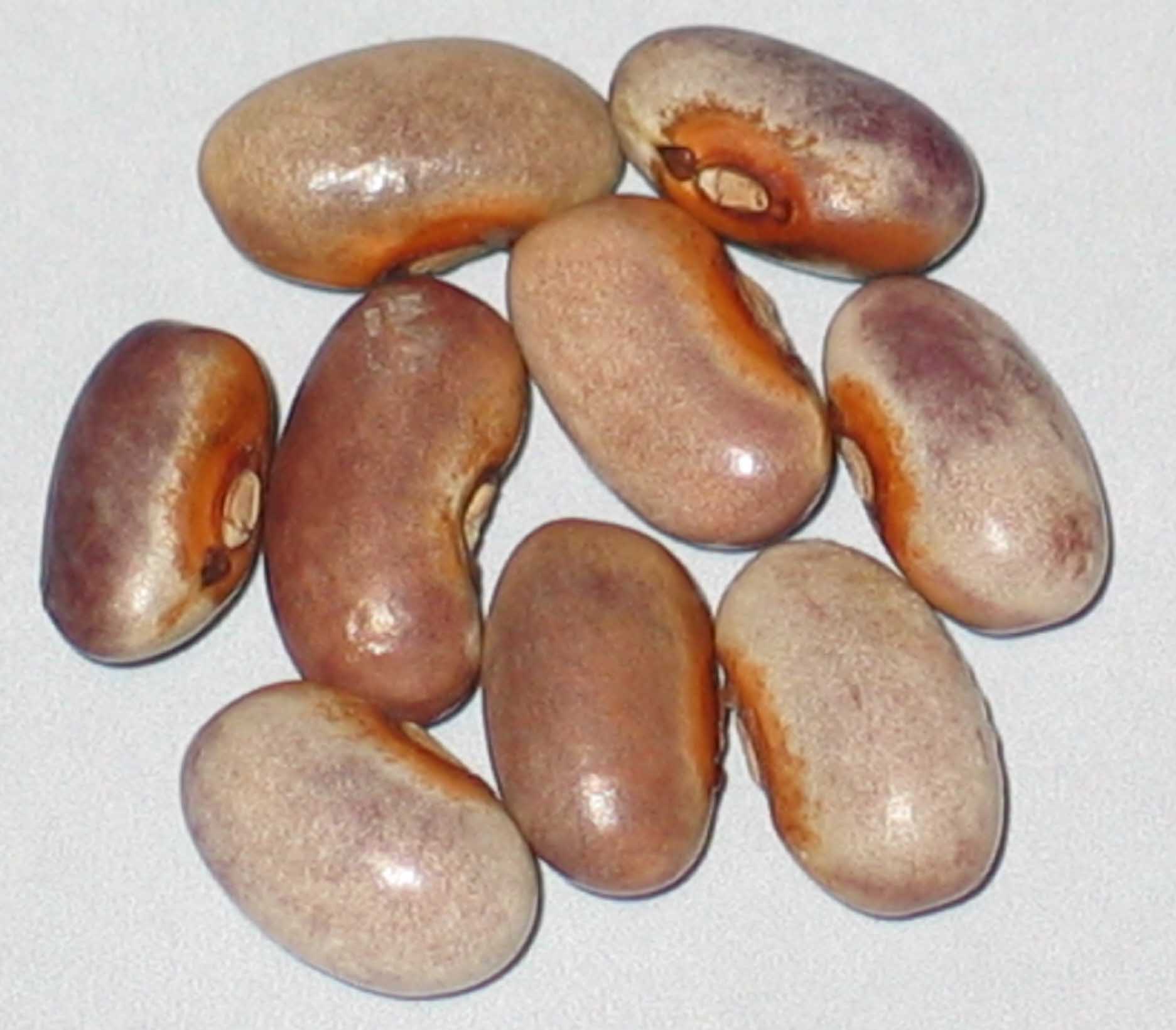
Chaska Purple
Grown In '17,'21 & 2022
Bush Snap. One of the many original named beans by the late Robert Lobitz of Paynesville, Minnesota. Robert introduced most of his beans from 1998 to 2006 through the Seed Savers Exchange (Decorah, Iowa) yearbook. Named after the Chaska Purple softball team in the town of Chaska, Minnesota of which their team also uses the color purple on their uniforms.
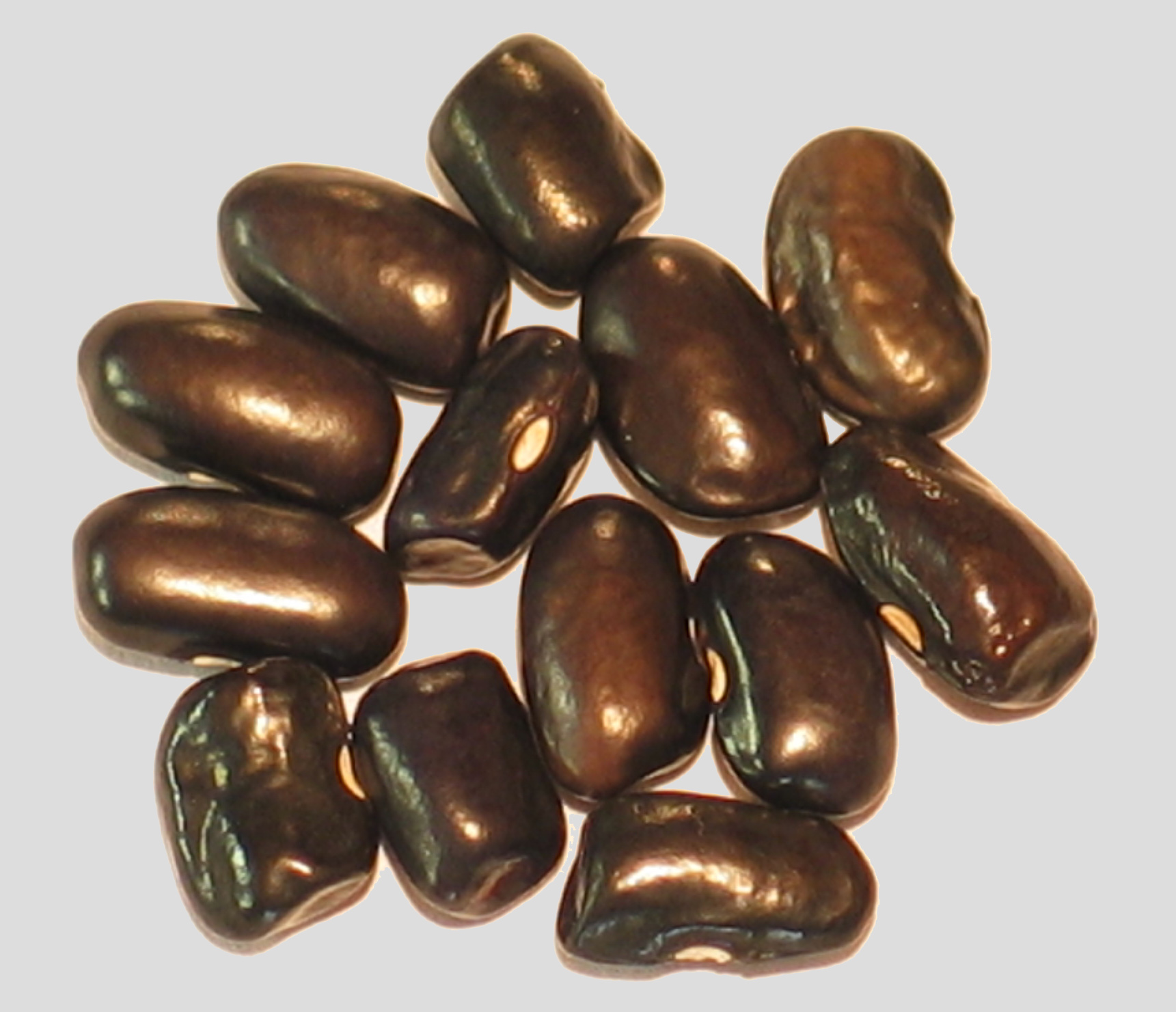
Cherokee Trail Of Tears
Grown In ’17 & 2022
Pole. Also known as Cherokee Black, the variety is good as both a snap and a dry bean. The bean was shared with Seed Savers Exchange by the late Dr. John Wyche of Hugo, Oklahoma. His Cherokee ancestors carried this bean over the Trail of Tears, the infamous winter death march from the Smoky Mountains to Oklahoma (1838-39) that left a trail of 4,000 graves.

Chester/Flagg Or Skunk
Grown In ’21 & 2023
Pole Dry. Also known as Flagg or Skunk. Gail Flagg a long time grower of the bean states the bean had been grown around Chester, Vermont for a very long time. Thus the synonym names of the bean called Skunk which has it's roots in the Iroquois nation.

Chocolate
Grown In '17,'18,'21,'23 & 2024
Semi Runner Dry. I had obtained this bean from a Seed Savers Exchange listing which goes back a bit further than 2013 from a Maine lister who runs a school gardening program. Upon growing out the bean it seems it was an outcross, or if a stable variety certainly the seed start I got was definitely outcrossed. The bean has produced over the years a pretty assortment of off types and grows well. Still have not been able to grow a stable version of the original bean.
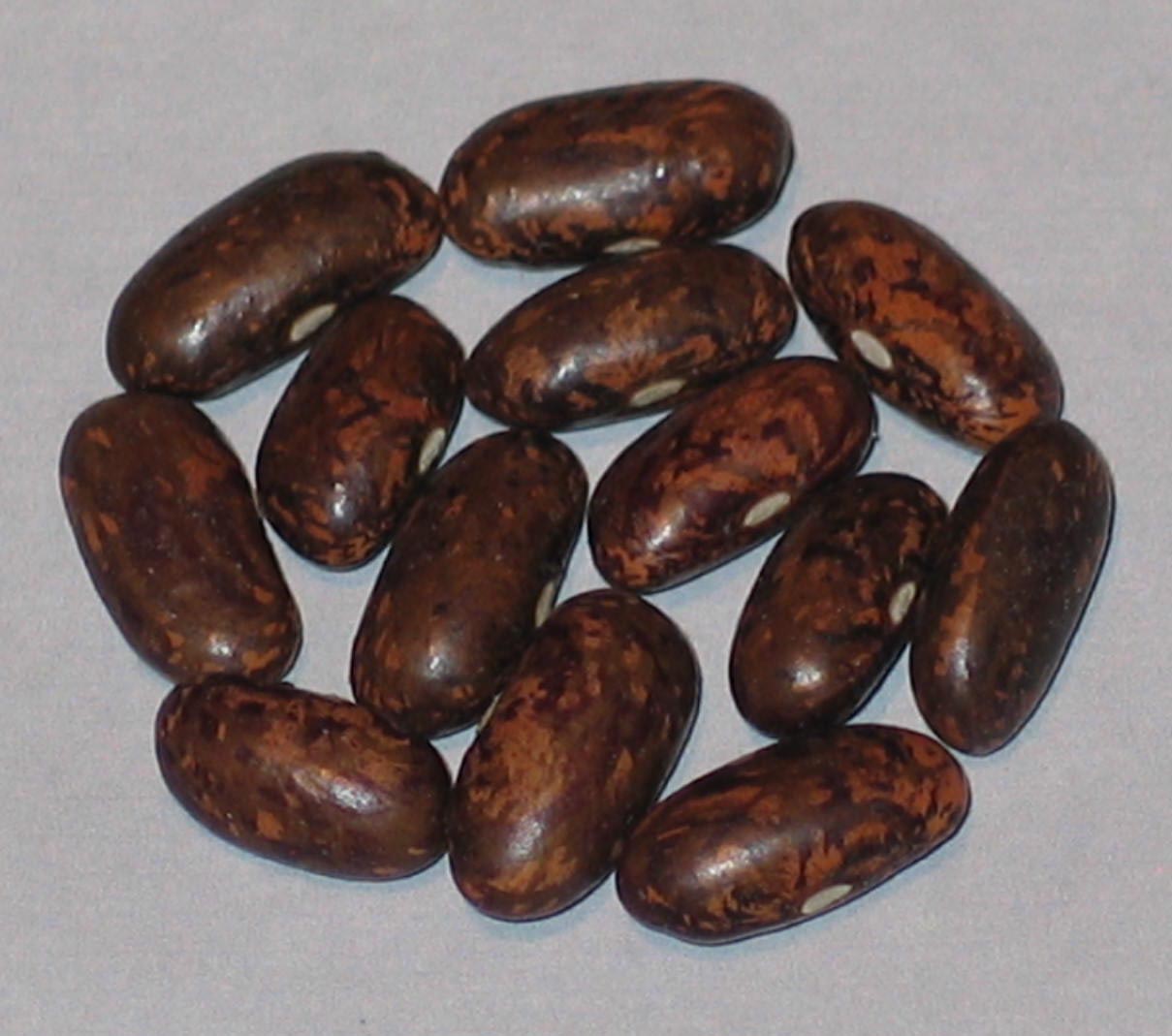
Chocolate Mosaic
ALL SEED IS OUT TO GROWER
Pole Dry. Heavy seed production but runs late into the season, late September and early October. Seed donor is Peter Murphy of Kingston, Massachusetts 2022.
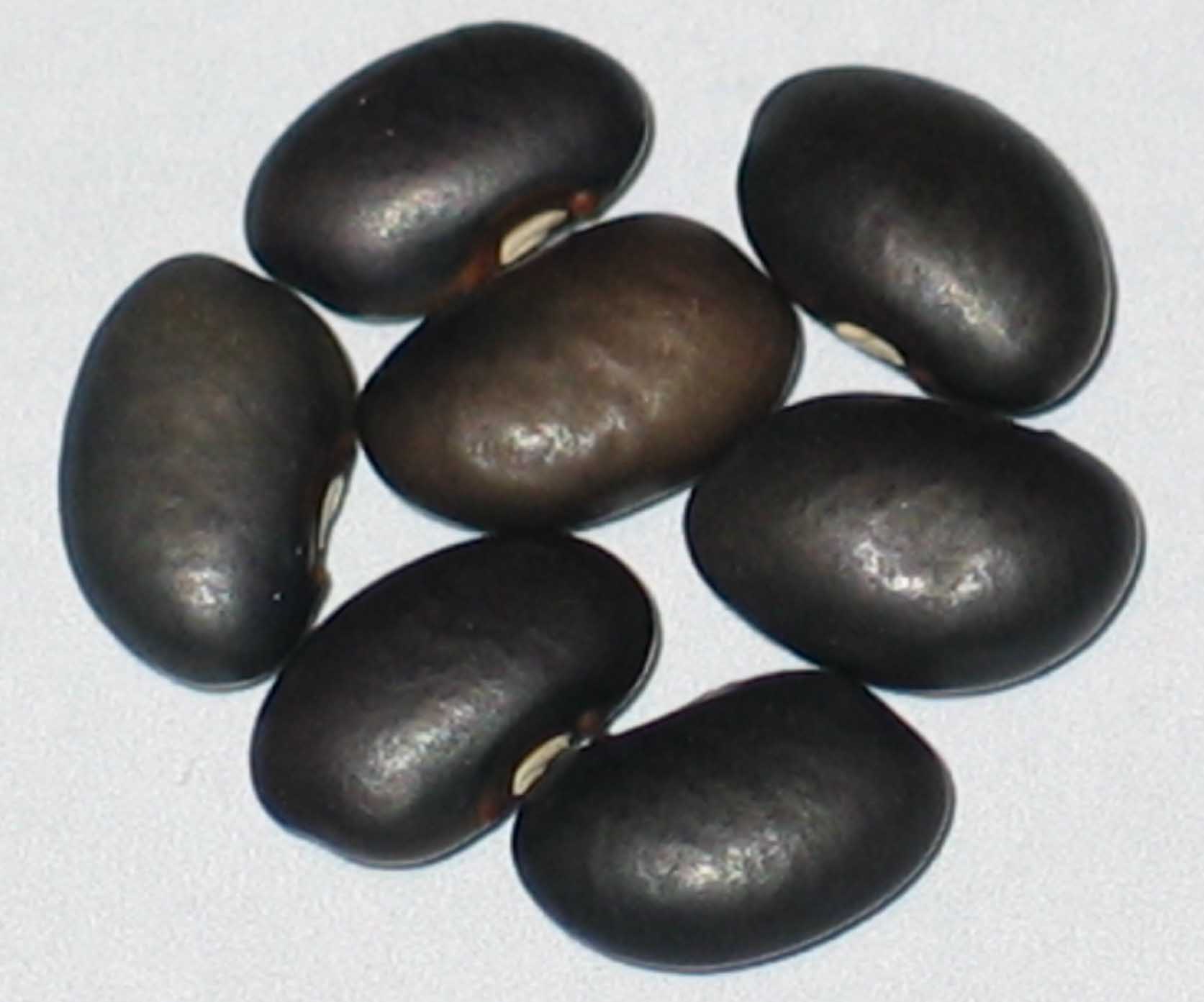
CIAT Bean 4637
Grown In 2017
Pole Dry. This variety was obtained in 2014 from a Hobartville, New South Wales, Australia grower. I am of the belief he got it originally from the Australian Seed Bank who likely obtained it from the large bean collection in the country of Columbia.

CIAT Bean G-8043
Grown In '16 & 2023
Bush Dry. This bean has the same origin as the CIAT Bean 4637.
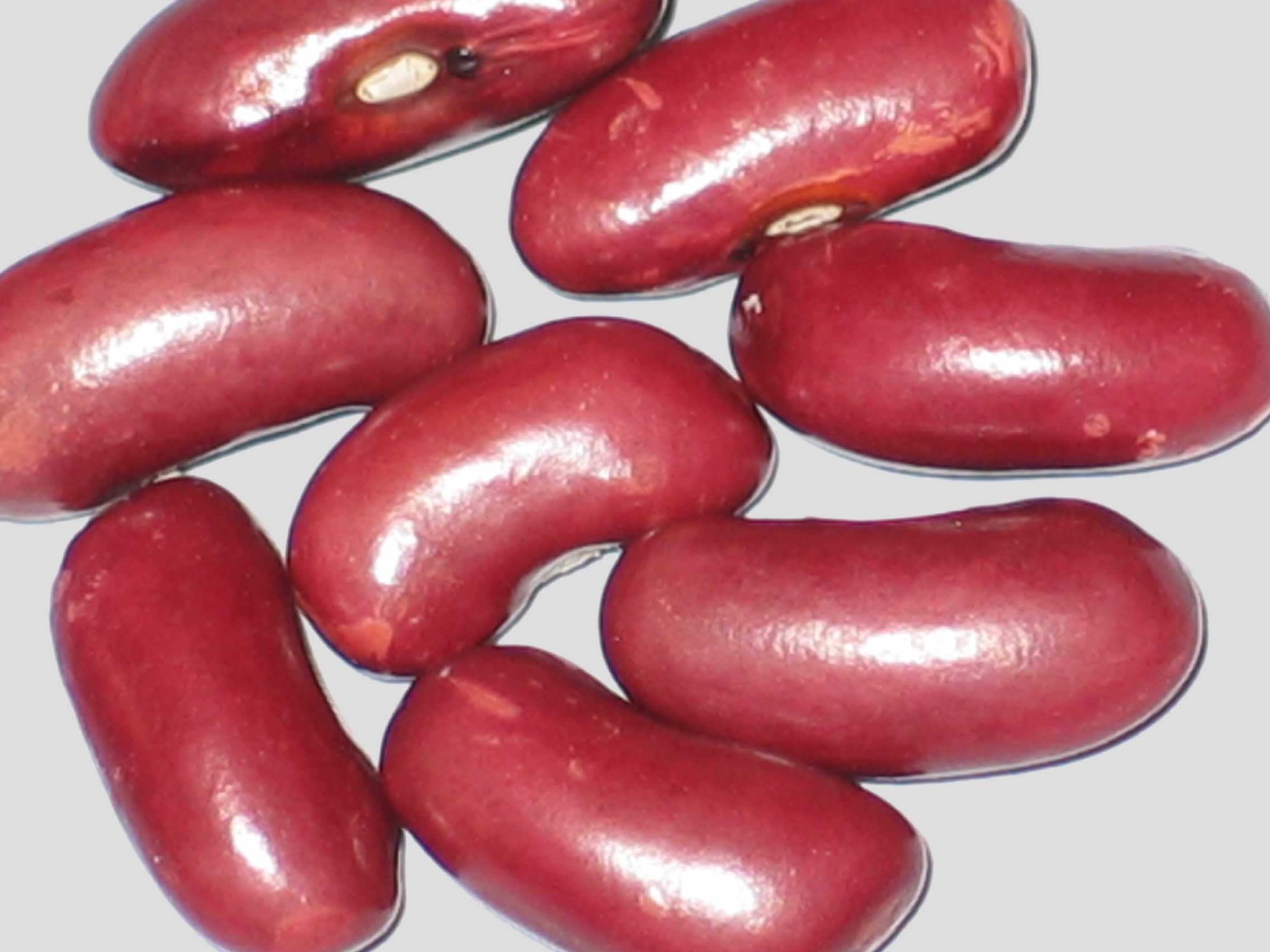
Clarendon Wonder
Grown In 2018
Bush Dry. My original donor from Hobartsville, New South Wales, Australia gifted this bean to me in 2014. Believe this to be an Australian variety.
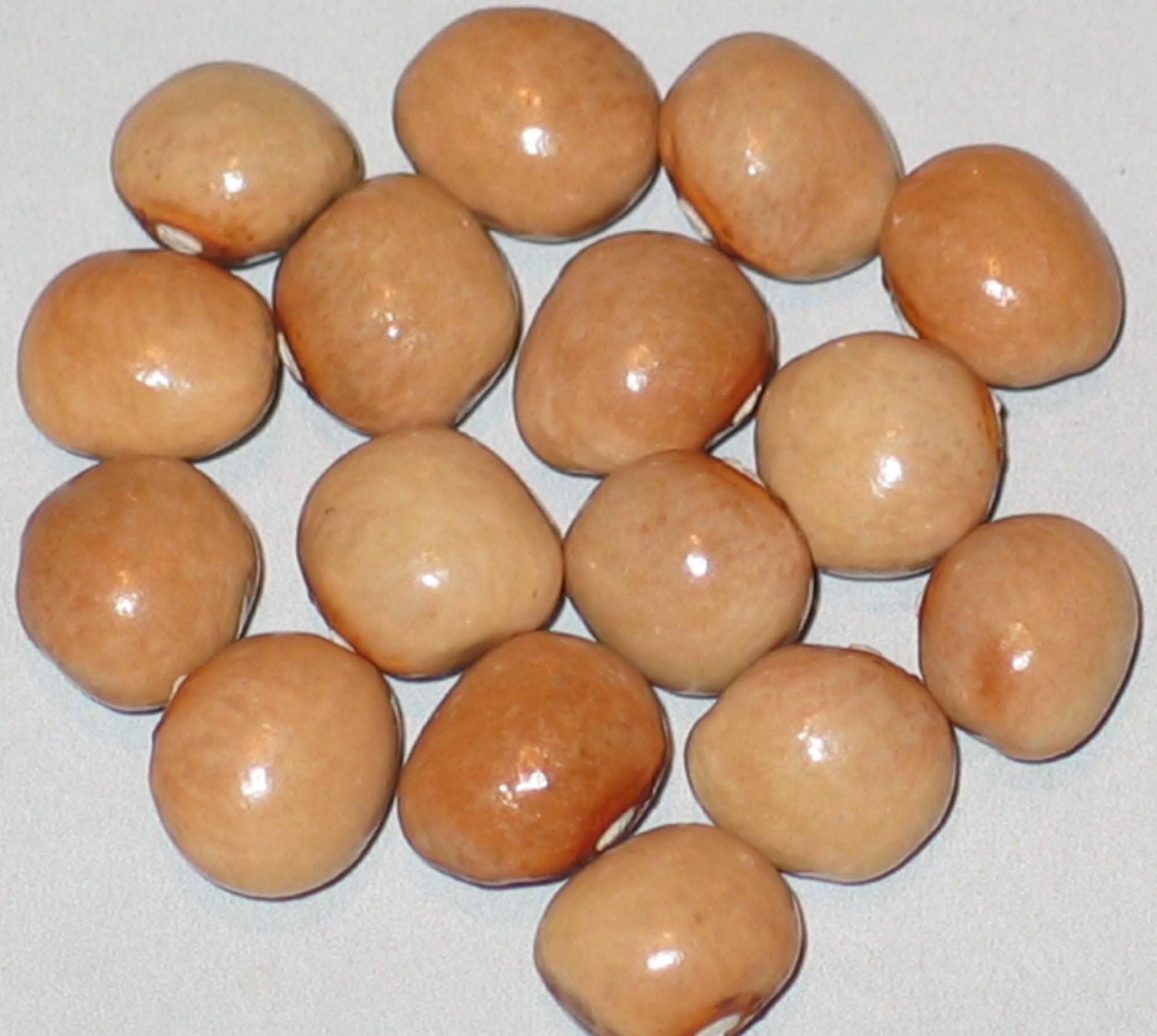
Clay Bank Fall
Grown In '17,’19 & 2021
Pole. I have a Washington state donor for this bean, but still don't know anything of it's origin. At the 2019 Appalachian Seed Swap in Pikeville, Kentucky I have heard the bean mentioned. Possibly Tennesse and Kentucky are the beans point of origin.
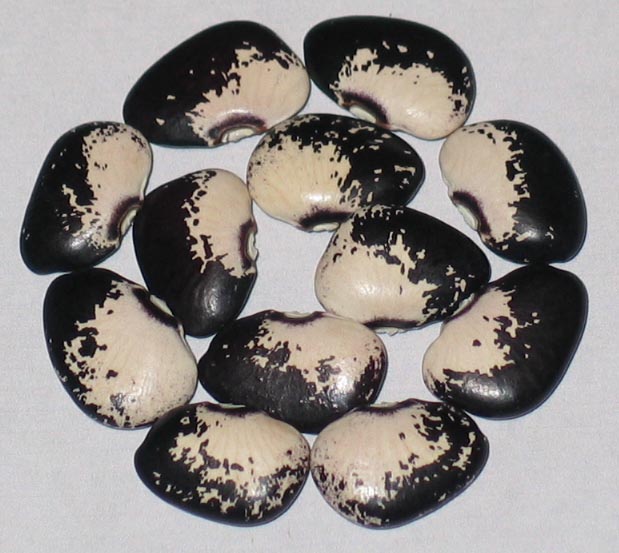
Cliff Dweller
Grown In 2024
Pole Lima. The name surely suggests the bean might originate with the Cliff Dweller people of the south western area of the U.S. Donated to me by Curt Burroughs of Memphis, Missouri in 2019.

Coco de Belle Ile
Grown In '17,'21,'22 & 2023
Pole Dry. My original seed donor for this bean was a grower in Meise, Belgium. The beans are originally from Belle Ile de Mer. A French Island off the coast of Brittany.
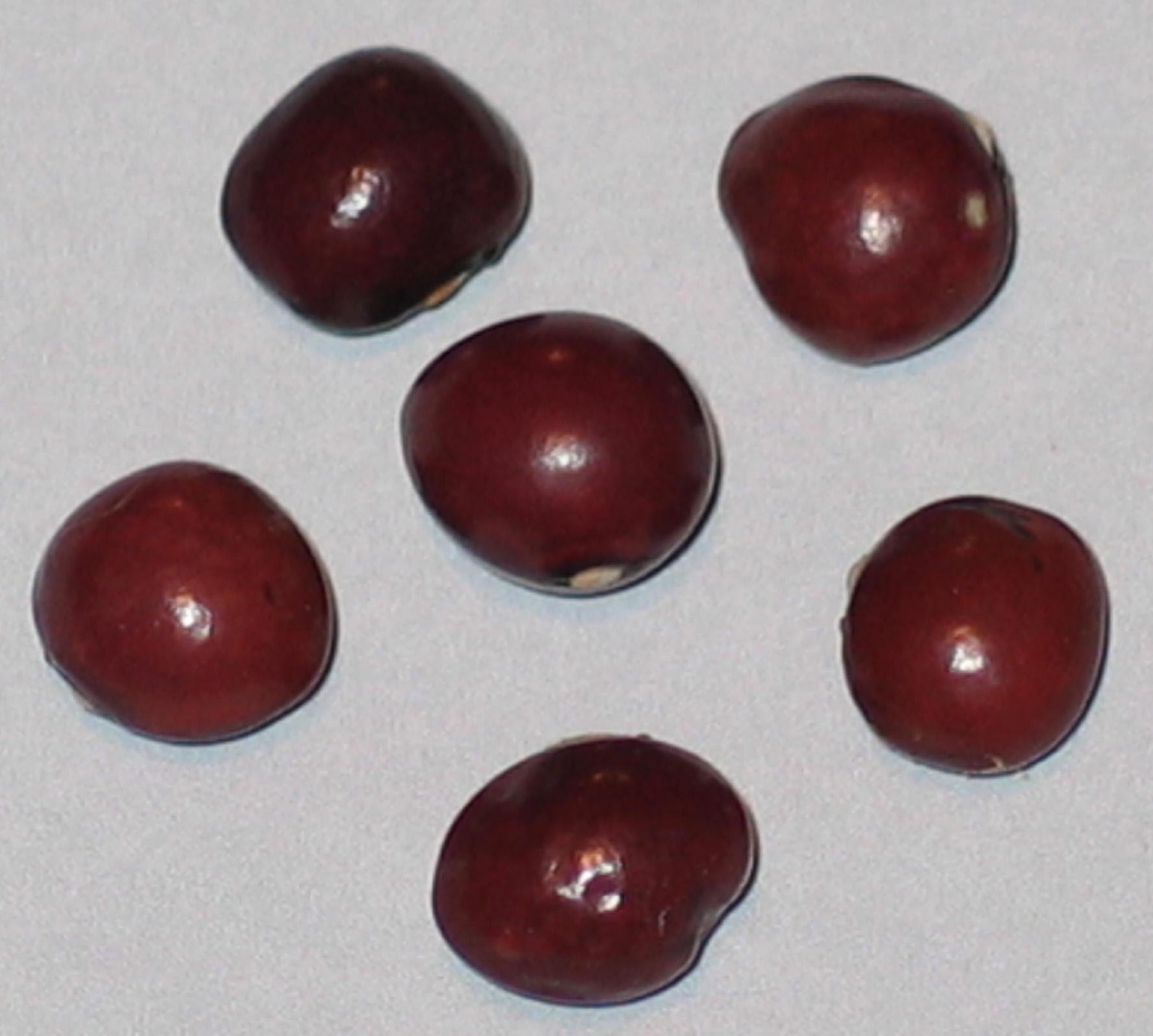
Coco Rose de La Meuse
Grown In 2021
Pole Dry. My seed donor is from Willich, Germany, 2019. It’s name interprets as Pink Coconut Of The Meuse. Beans turn brown when cooked. An early yellow podded variety. Likely origin is France.
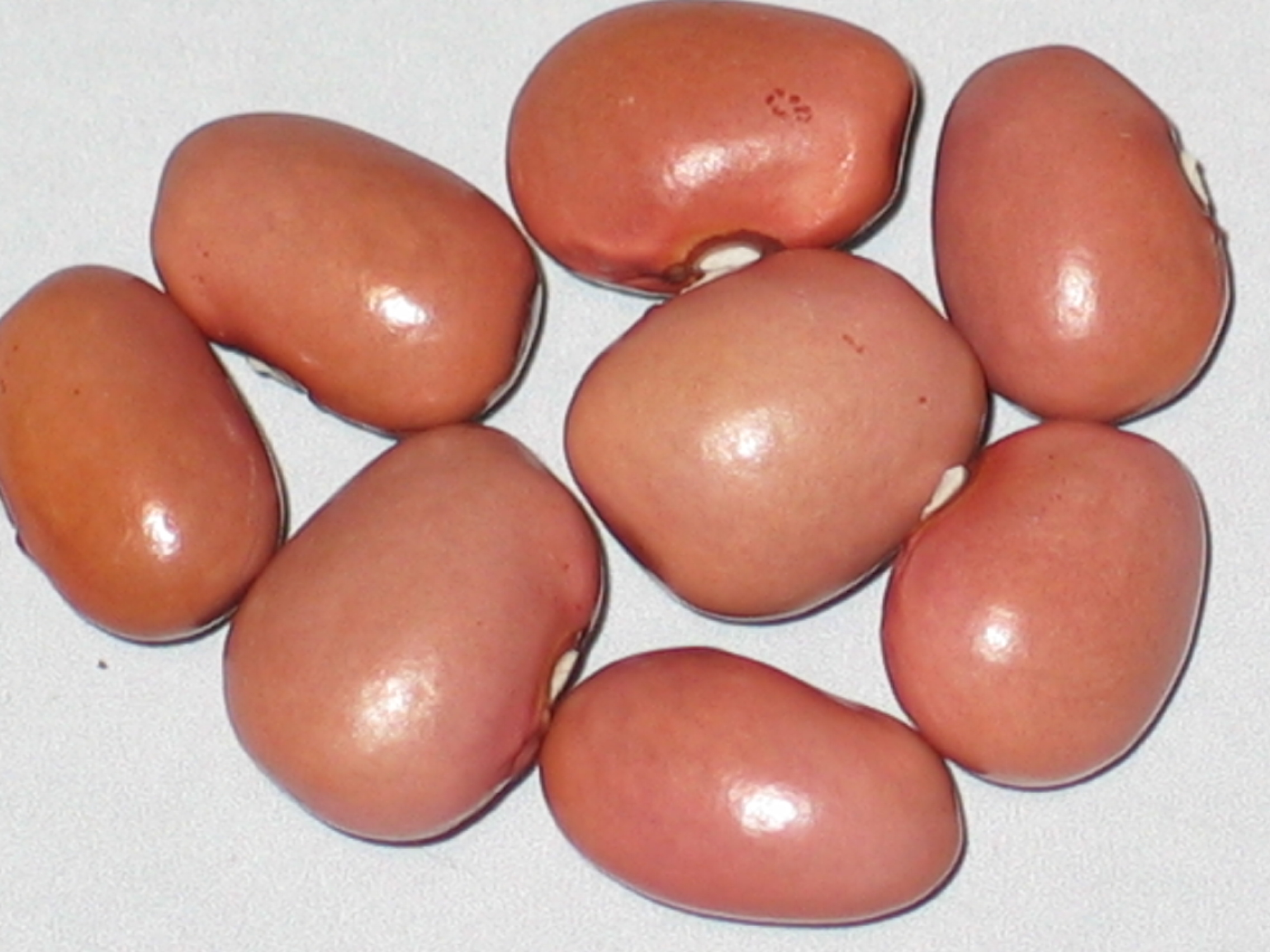
Coco Rose de St. Crepin
Grown In 2016
Bush Dry. My seed donor in 2016 was at the time a high school student in Guthrie, Kentucky. It's name would definitely seem to indicate a French origin.

Coco Sophie
Grown In 2024
Pole Dry. Early in maturity. Donated to Seed Savers Exchange Heritage Farm in 2002 by William Woys Weaver. Weaver had obtained the bean from Graines Baumaux seeds of Mazirot, France. According to Weaver the variety is pre-1760 perfected in Germany but probably native to the U.S east coast. Has been grown in the Delaware valley since the late 1600’s.
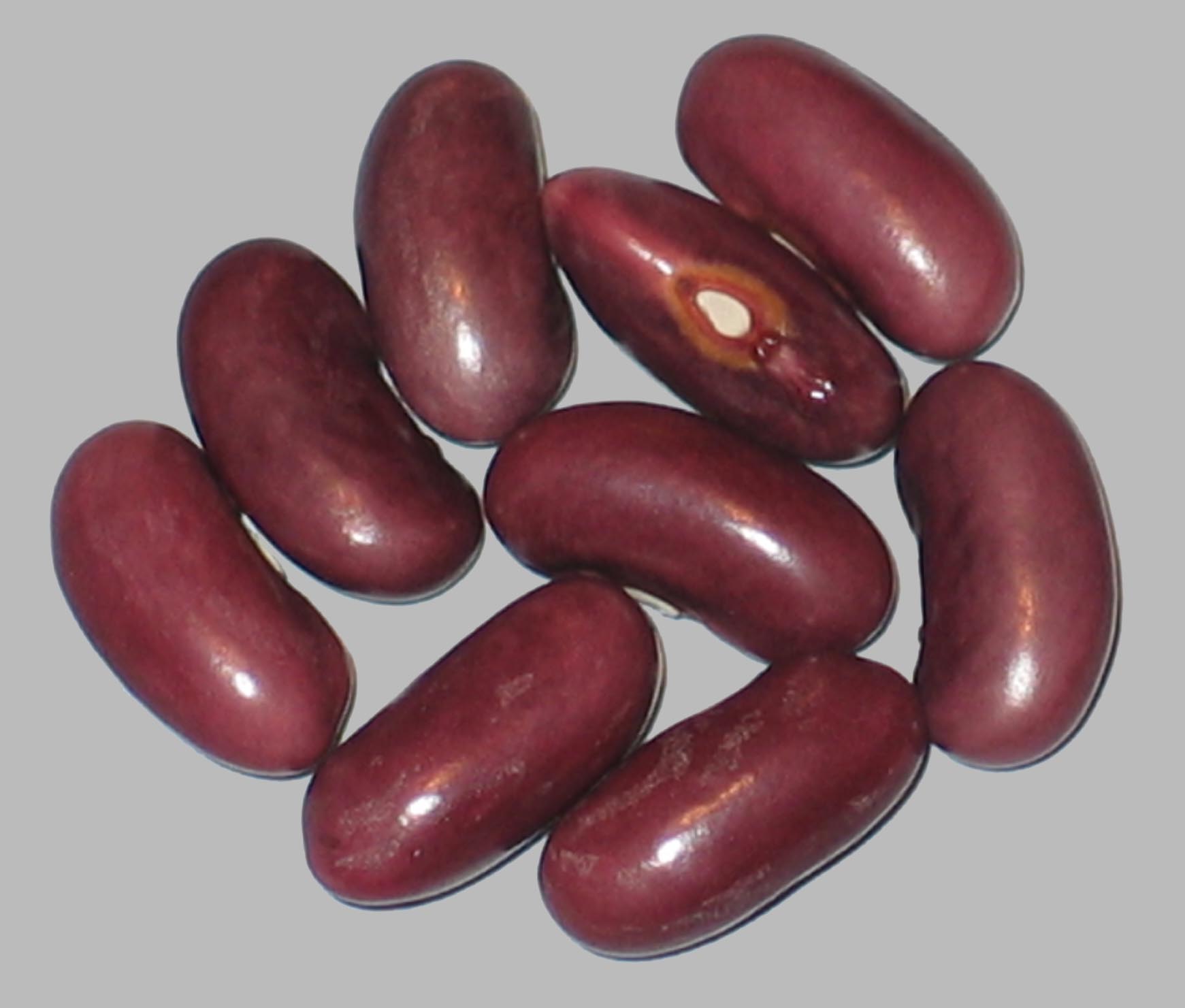
College Early
Grown In 2016
Bush Snap. Australian variety comes out of a breeding program at Hawkesbury Agricultural College in Richmond, New South Wales. It was derived from Hawkesburry Wonder as one of the parent varieties in the mid 1960's. It is part of a series of beans from this same breeding stock. Sent to me by my Hobartville, New South Wales seed donor in 2014.
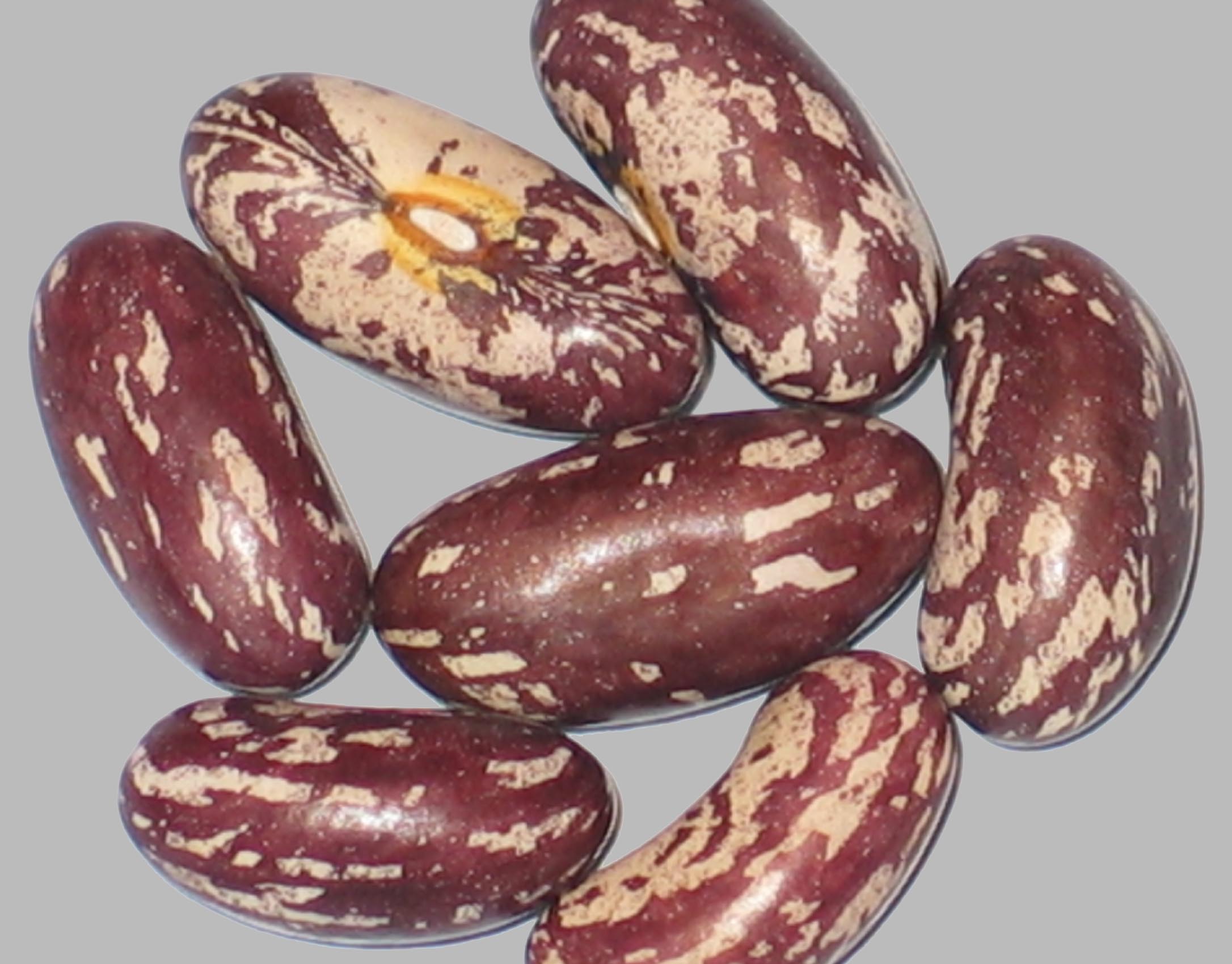
College Pride
Grown In '16 & 2022
Bush Snap. Australian variety comes out of a breeding program at Hawkesbury Agricultural College in Richmond, New South Wales. It was also derived from Hawkesburry Wonder as one of the parent varieties by about 1965. It is part of a series of beans from this same breeding stock. Sent to me by my Hobartville, New South Wales seed donor in 2014.

Connecticut wonder
Grown In 2024
Pole Snap. In 1919 Reverend Frank Abbott told his granddaughter Deborah that the beans were a gift from the bees. He believed the beans were a cross in his Connecticut garden between Kentucky Wax and a Cranberry bean. Deborah eventually gifted the beans to John Withee of the Wanigan bean network fame and John in turn gave them to the Seed Savers Exchange in 1981. My seed donor is Jim Salat of Stanwood, Iowa 2023
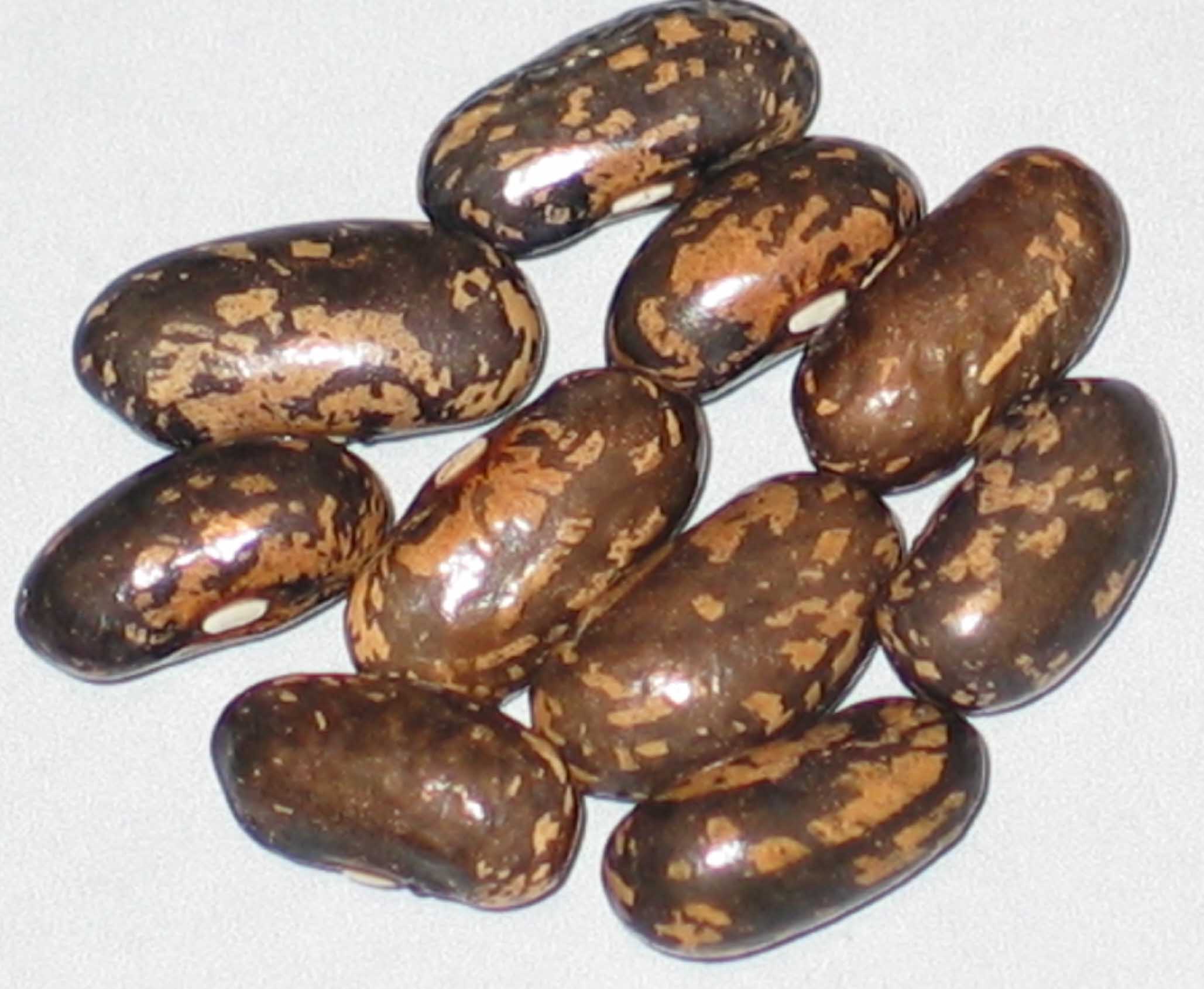
Corbett Refugee
Grown In '17 & 2024
Bush Snap. Discovered in a field of Refugee beans by Ralph Corbett of the Sioux City Seed Company in Sioux City, Iowa during the late 1920's. A plant that would not succumb to the mosaic virus. Through a continued selection and propagating the seeds of that lone plant. The Corbett Refugee variety was born. The productive plants produce round green pods 5 to 6 inches long. My seed donor is from Hobartville, New South Wales, Australia.
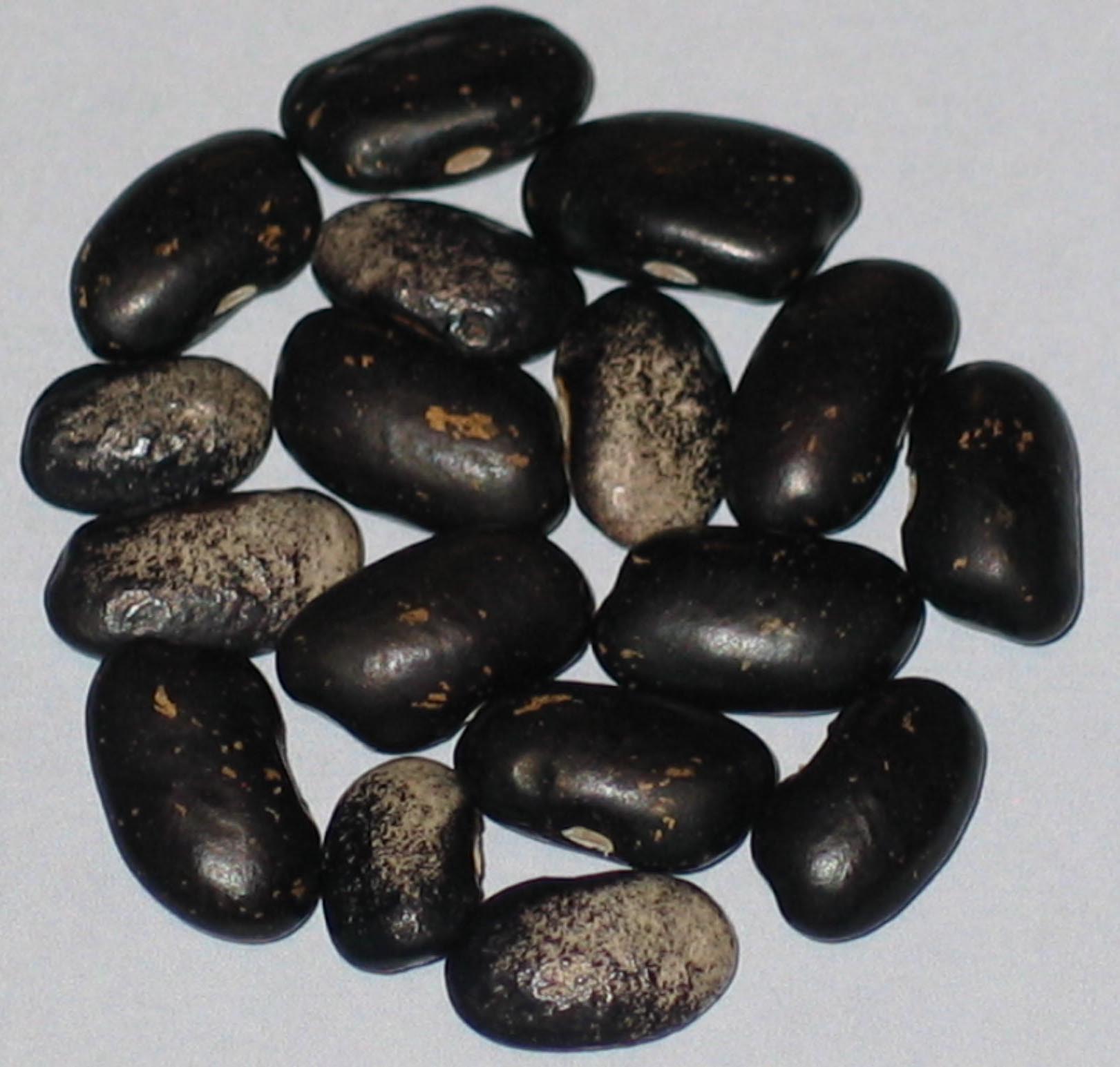
Corn Planter Purple
Grown In 2020
Pole Dry. A Corn Planter Purple with a little different looking seed coat. My seed donor comes from the Cape Cod, Massachusetts area, 2019.
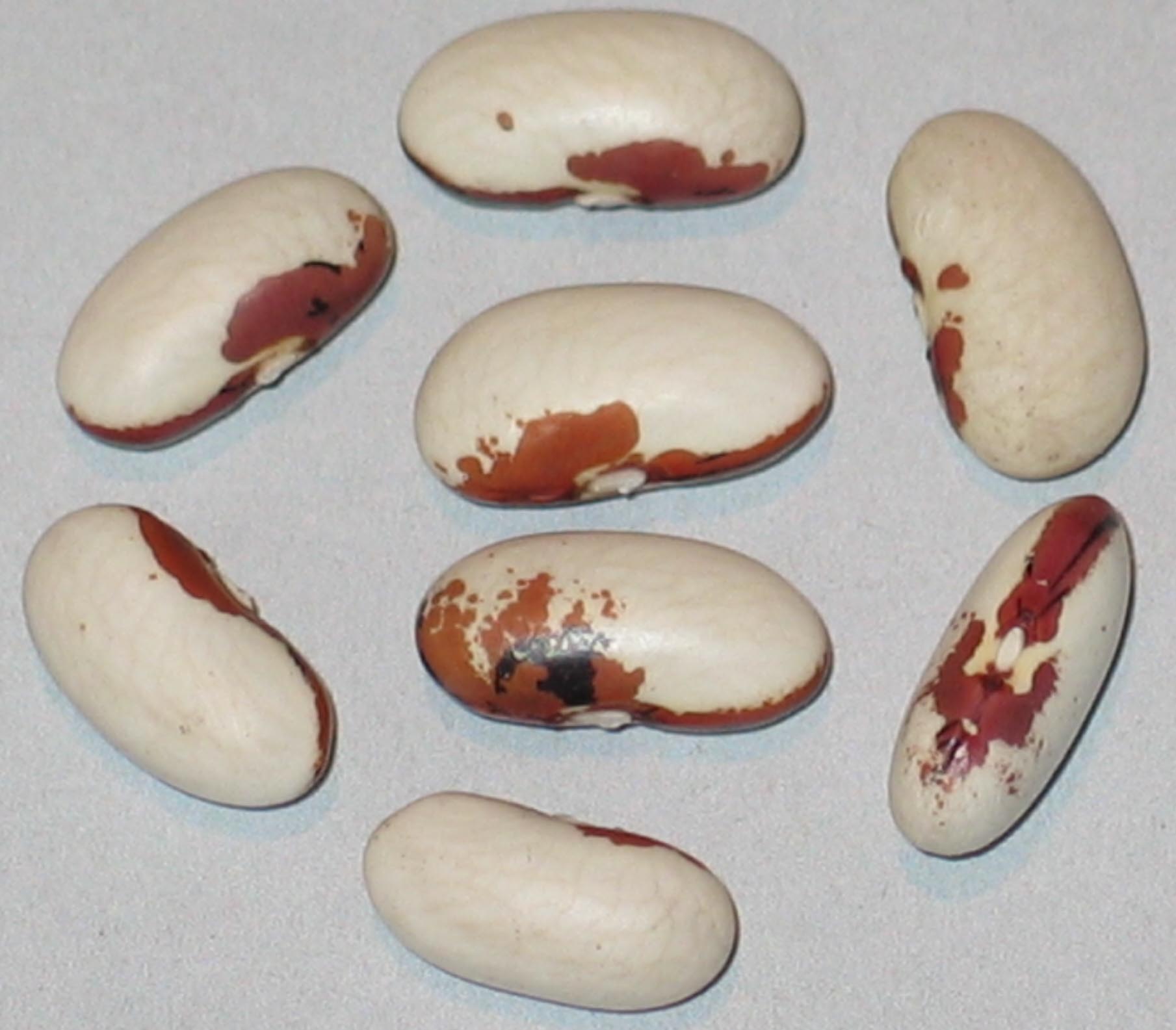
Cosaruciaru Di Sicili
Grown In '16,’17 & 2021
Bush Dry. Cosaruciaru in Sicilian means “sweet thing”. Passed down through the generations within Scicilian families, many of whom made their living growing early produce in greenhouses. Until the 1950s this bean was grown in the damp, alluvial soil near the Modica-Scicli River. The variety had become known for it's characteristic color and thin skin. A true old world heirloom.
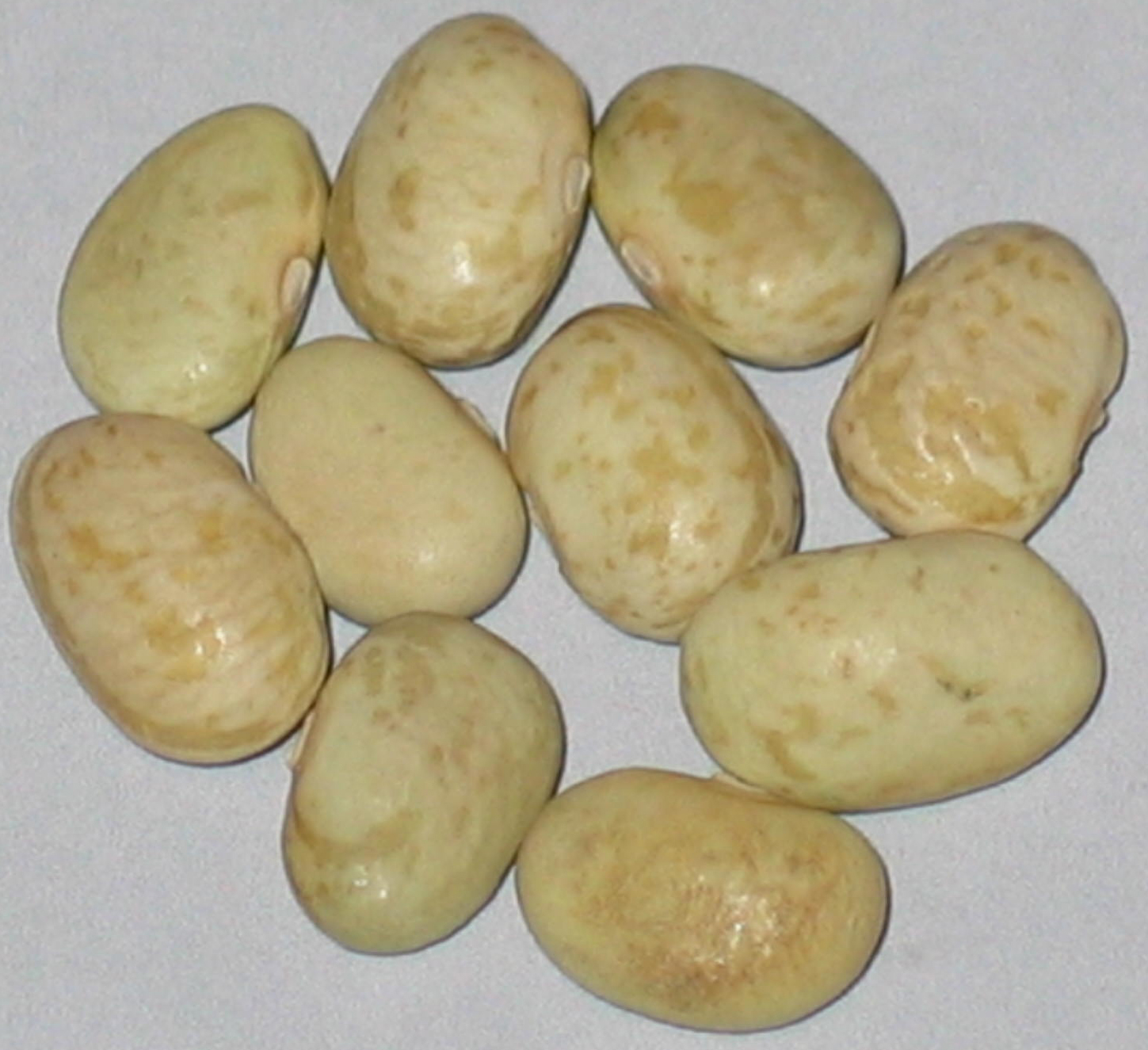
Coscorrones
Grown In ’18 & 2021
Prostrate growth habit of laying on the ground and spreading without climbing. Late maturing bean from Chile. My seed donor is Joseph Simcox "The Botanical Explorer" December 2013.
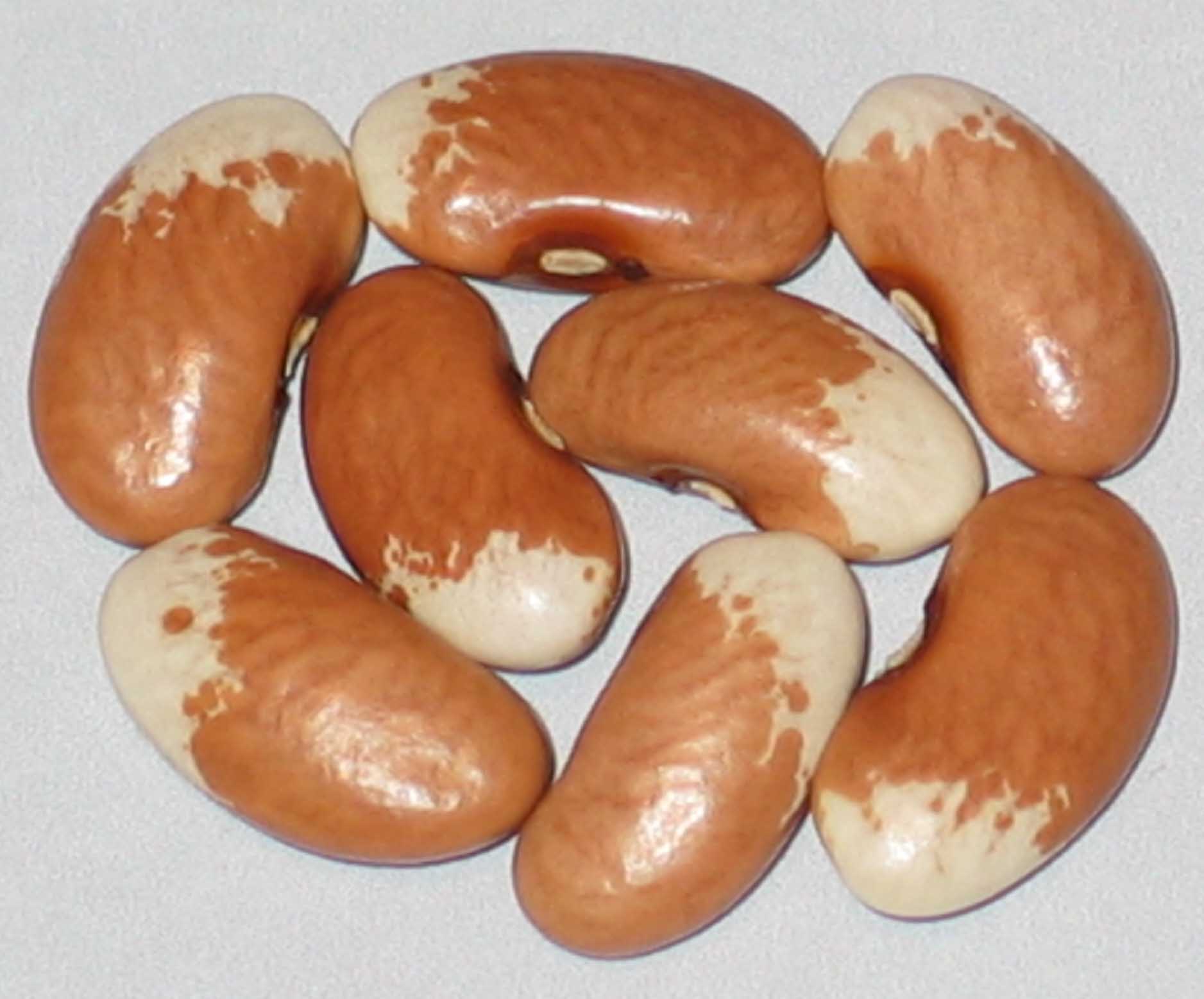
Cottontail
Grown In '17,'18 & 2023
Pole Dry. Very productive, but very late. Often time plants are pulled and dried further undercover just before frost. An outcross discovery by Cynthia Keesan of Michigan in 2014. Fresh seeds are white and flesh toned. Seems to grow true to type. Named after the creature that liked to eat her newly grown beans.
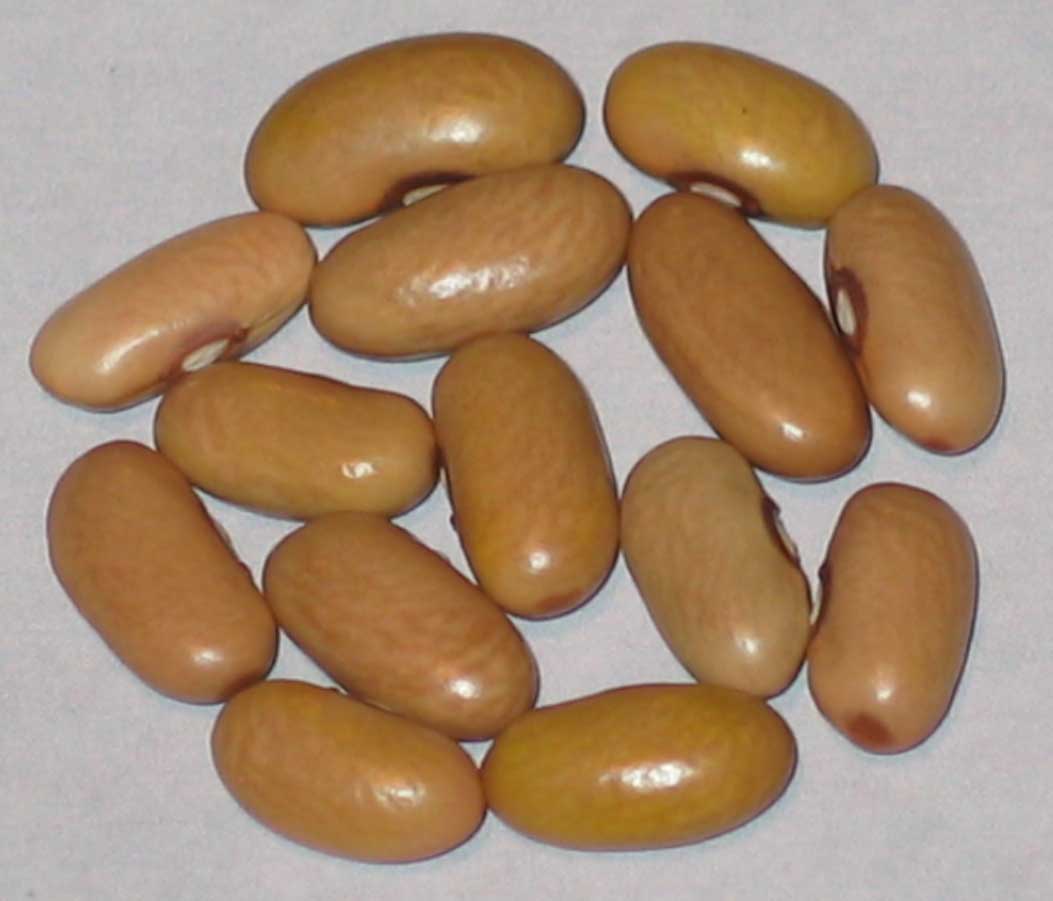
Covelo Reservation
Grown In 2022
Bush/Snap/Dry. Produces 6 inch Romano type pods. This bean comes from the Round Valley of northern California. Round Valley is a reservation home of the Round Valley tribes, descendants of the Yuki, Concow, Maidu, Pomo, Nomlaki, Cahto, Wailake and Pit River people. One of the very few native beans of the Pacific coast. It is said to grow well in extreme summer heat.

Cranberryfleider
Grown In ’22 & 2023
Pole Dry. Several beans with this same shaped and colored seed maybe the same bean from different countries. Lilac Cranberry and Forelle Fleiderfarben just to name two others. My donor is Chase Krug of Marion, Iowa. Chase went through a period of collecting beans that Joseph Simcox brought back to the U.S. from Europe.

Cream Colored Fall
Grown In '14 & 2023
Bush. From the Remy Orlowoski (deceased) Sample Seed Shop Collection. A staple of eartern Kentuckky gardens. It is stringless and tender hulled.
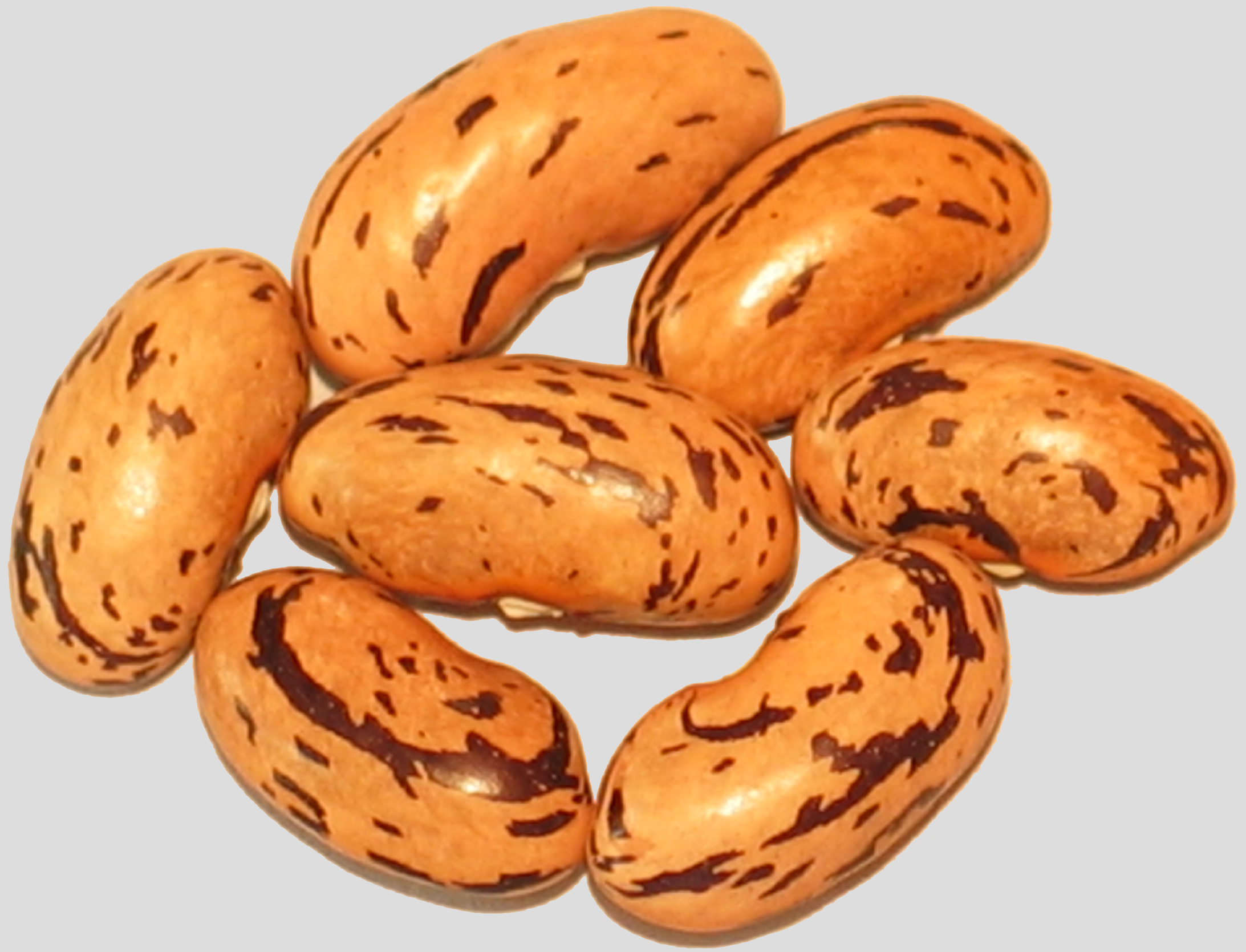
Crevette Kidney
Grown In '16,'21 & 2023
Semi Runner-Dry. Seed donor is Joseph Simcox "The Botanical Explorer". Country of origin France.
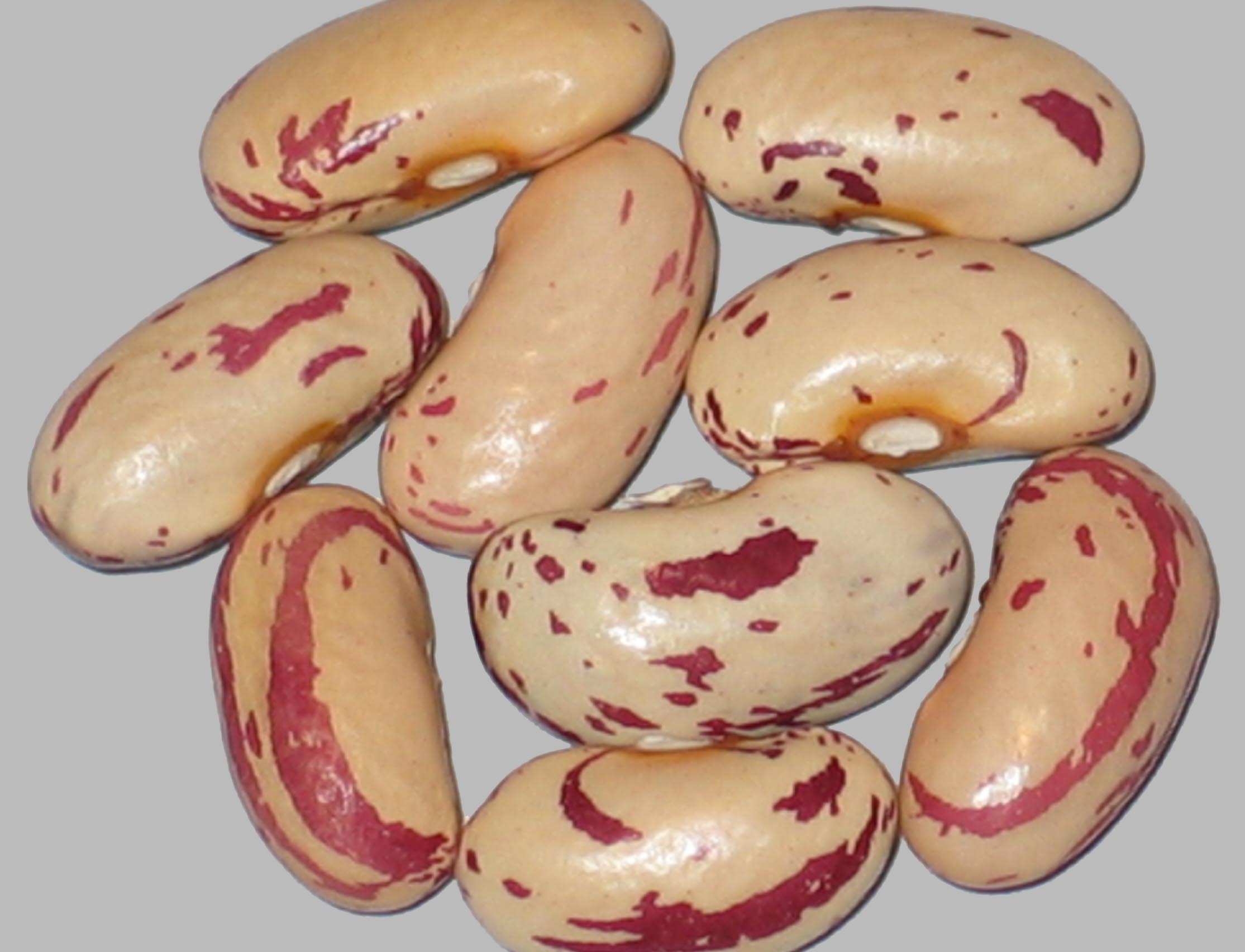
Croatian Cranberry
Grown In 2016
Bush Dry. Grows without runners. Seed donor is from Nasice, Croatia. Family in Croatia has always grown this bean without any special name of identification. So I gave this name to this bean.
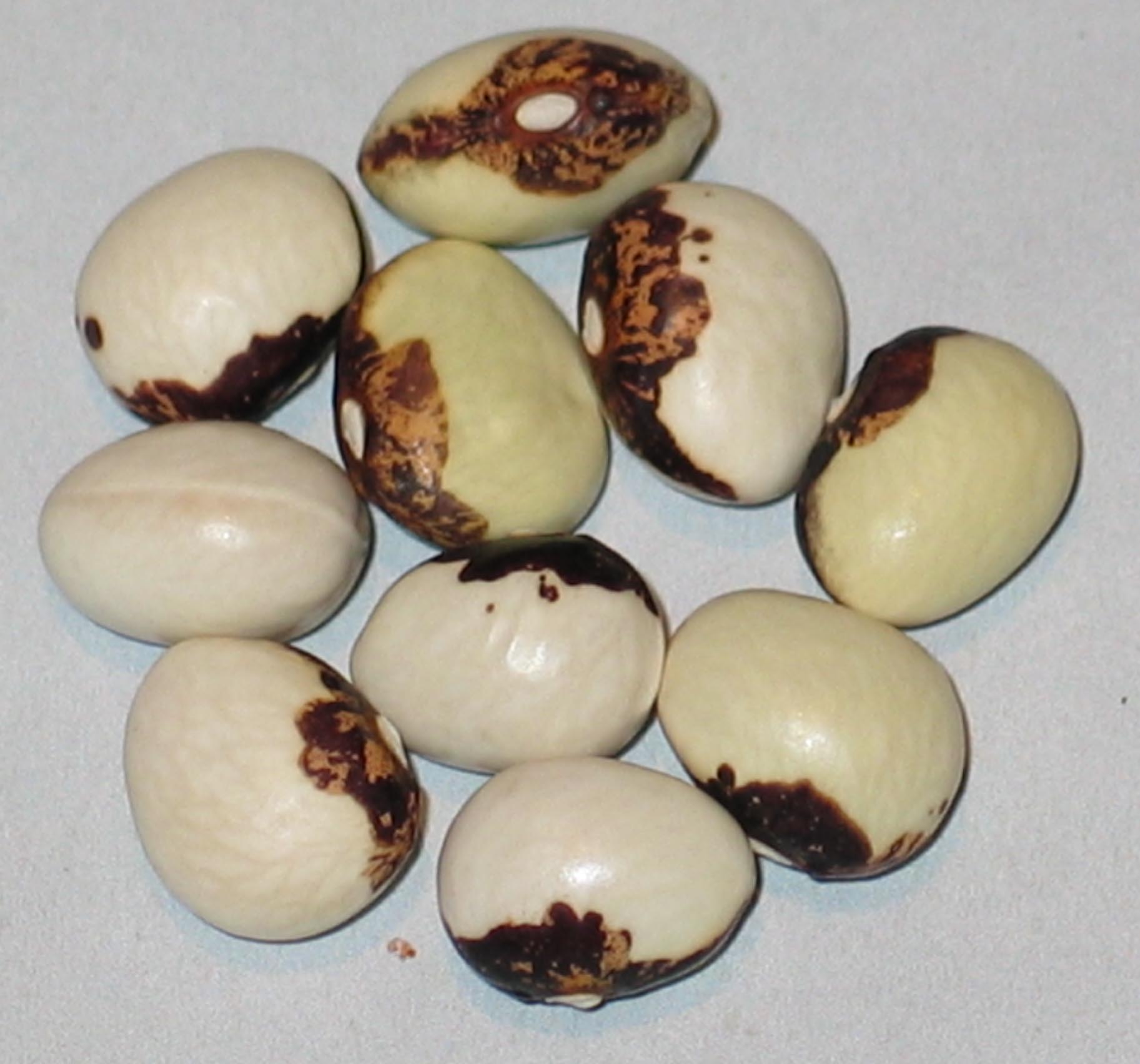
Croatian Monstrance
Grown In 2020
Pole Dry. More beans of the Monstrance legend. My seed donor is from Liebenfels, Austra, 2018
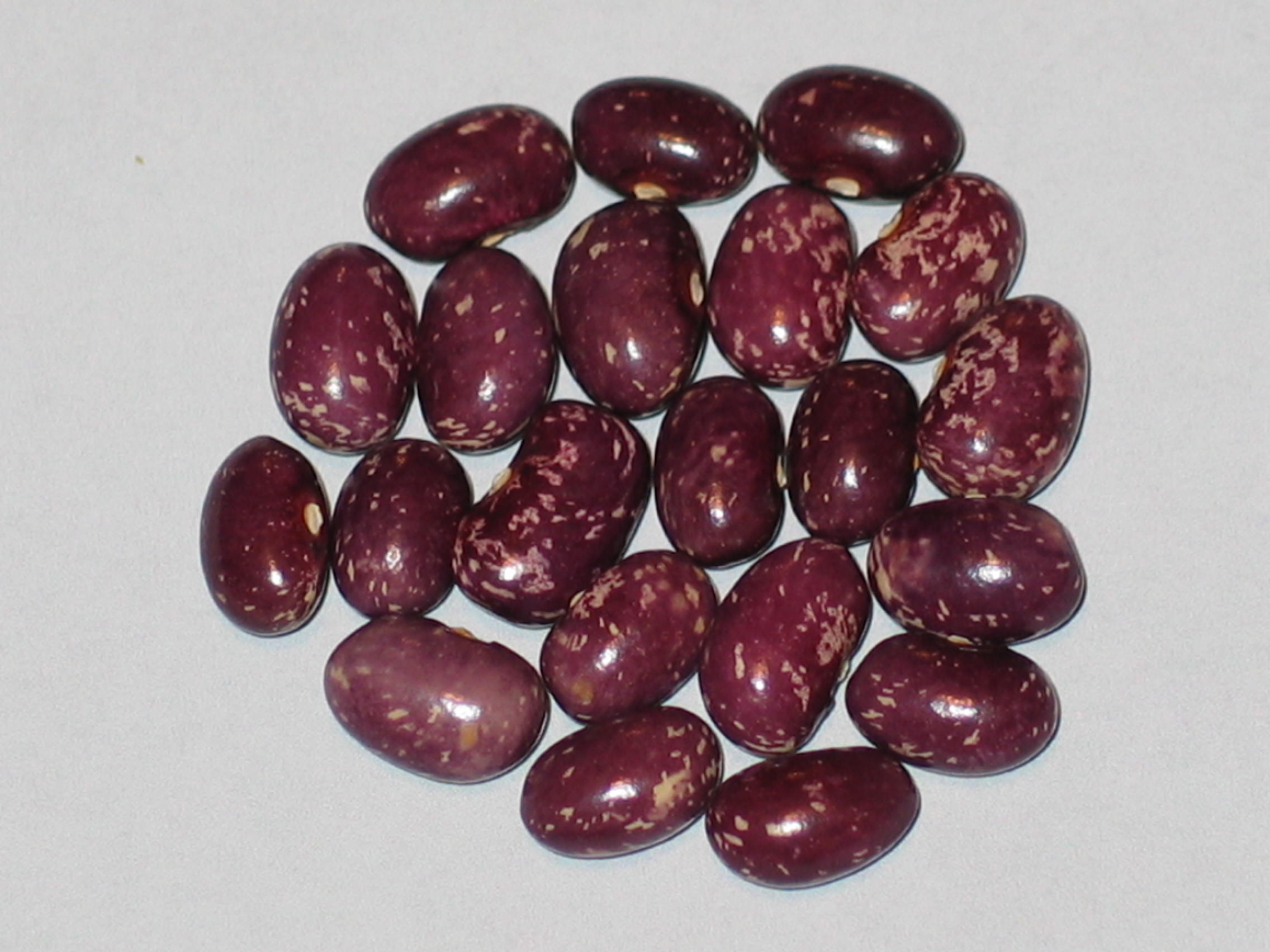
Crochu De Savoie
Grown In '21,'22 & 2023
Pole Dry. The beans name interprets as “Hooked Of Savoy”. My seed donor is from Lincolnshire, Enland, 2019. The bean is likely of French origin.

Crystal Wax
Grown In '13 & 2023
Semi Runner-Snap. Short snap pods are nearly white with a green tint. Likely the same bean as "Ice" which appears to grow identically. Seed donor is from Birmingham England 2012.